467-th district training center
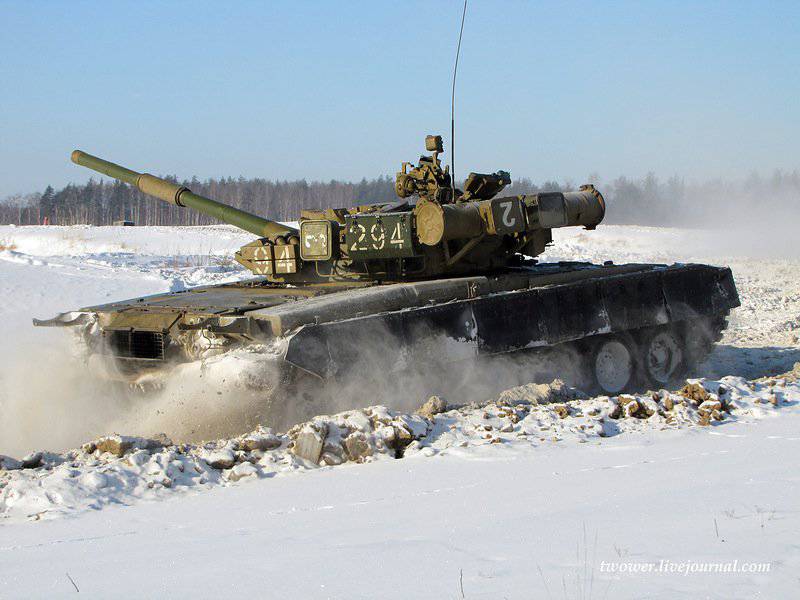
Official historical reference part:
The 130 Rifle Division was formed on January 15 on the basis of the 1942 Moscow Communist Rifle Division of the People’s Militia.
Guards banner awarded 8 December 1942 of the year in the city of Nova Russa (North-Western Front).
28 April 1943 Division Awarded the Order of the Red Banner.
25 August 1944 was awarded the honorary title "Tartu".
The fighting division finished 9 on May 1945 in the city of Liepāja, the Latvian SSR.
From December 1 1964, the part became known as the training division.
October 13 The 1966 of the division was given the honorary title Moskovskaya, and it became known as the 53 Guards Moscow-Tartu Red Banner Motorized Rifle Division.
1 December The 1987 division became known as the 467 Guards Red Banner Moscow-Tartu District Training Center for Junior Specialists.
A book about the history of the division from the moment it was formed to this day with a detailed description of the battles of the Second World War can be downloaded here: History of the 467 th OUTS.7z
The center prepares junior specialists for the Ground Forces in 39 specialties (commanders, gunners and drivers tanks, BMP-2 and BMP-3, drivers, anti-aircraft gunners, signalmen, commanders of reconnaissance units, snipers, etc.). About 6500 cadets can study at the same time, the training process provides more than 2 thousand teachers, instructors and other staff from the permanent staff. Recently, the Sertolovo and Kolomna training centers have been included in the 467th educational center; in the future, it is expected that all the training units of the Ground Forces will be united under the auspices of the Center.
In one year, the Center produces two graduates of cadets, the duration of training for each stream is 3 of the month. Training is divided into three parts:
- Improving the initial training (from the moment of arrival in the unit on December 31);
- general military training (from 10 to 21 in January);
- training in the specialty (from January 23)
Final examinations are held from 9 to April 21, after which the cadets are sent to the troops for further service in the specialty.
The problem of the uneven admission of future cadets to the training center, which usually occurs within two months, remains. In order that the staff idly did not spend time until the Center was fully equipped, a norm was introduced, according to which the lower training unit is a training platoon. Thus, the very first fully equipped platoon begins training, without waiting for the formation of the remaining platoons in the company. The direction of future students to the Center also helps to streamline the training process directly from the recruiting centers, and not as before from the troops (innovation of this winter), which stretched the time of arrival of the military unit. In this period, another innovation was tested: all cadets arrived within one month - December.
Between training periods (May-June, November-December), the Center hosts a number of gathering events with commanders of various levels: from instructors, commanders of divisions to commanders of battalions. The material base is being restored and improved.
From the autumn of this year, on the basis of the Center, additional training of servicemen of contract service on the existing specialty takes place during the 1 month (November-December 2011, the first batch, the second one will come in May), as well as the retraining of contract servicemen for a three-month period. For additional training and retraining in the CLC, special programs have been developed. Since this year the approach to the composition of troops has changed, it is expected that all contract servicemen will be trained in training centers, the results of which will make a decision to conclude a contract with the serviceman for further service.
I will dwell separately on the training center in Kolomna, which became part of the 467th training center and specializes in unmanned aerial vehicles. The center is located on the territory of the former artillery school, some of the teachers of this school are involved in the educational process. They train exclusively junior UAV maintenance specialists, i.е. operators are not trained there, only support staff. The term of study is 3 months. If cadets from among the conscripts learn to operate only UAVs of domestic production, then contract cadets undergoing additional training and retraining study, in addition to domestic and Drones Israeli production.
Let's go to the territory of the Center in Kovrov.
PPC
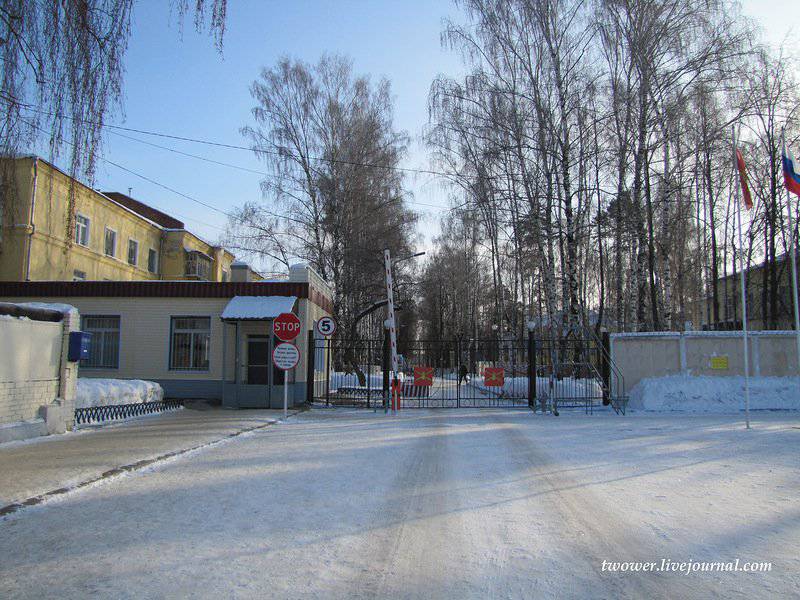
2.
Right IP on the pedestal, as the memory of the military past of the 130 Division
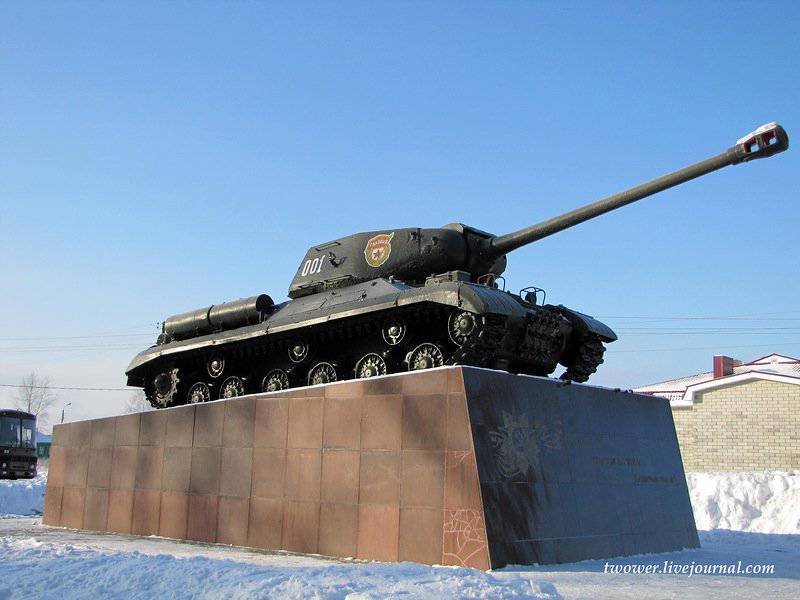
3.
The military town is located next to the unit, has the status of an open and transferred to the balance of the municipality. About half of the apartments are occupied by reserve servicemen, retirees, the rest are used as service housing. As a result, all the existing officers of the apartments are not enough, so you have to rent them in the city. The prices are quite divine, in the area of 4-5 thousand rubles, so compensation for sublease housing for a family of 3-s people covers these costs.
In the 2007-2008 r built a new nine-story building
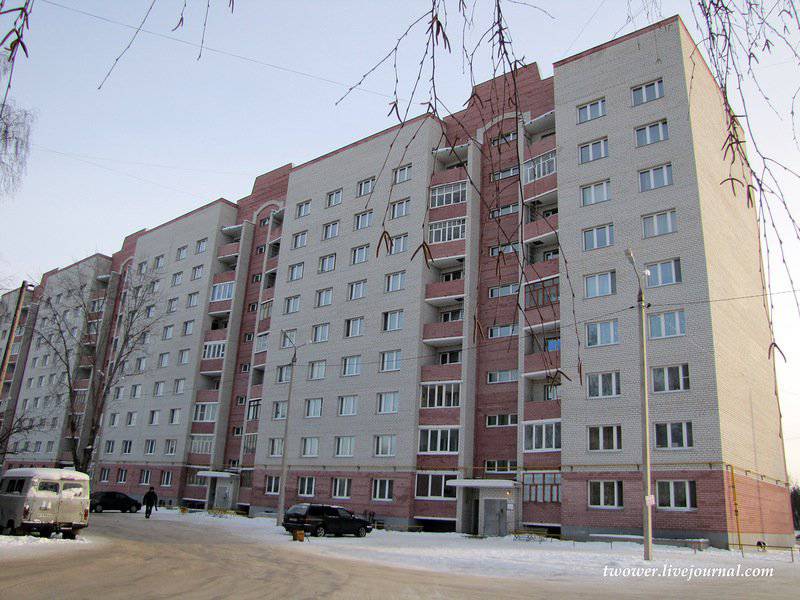
4.
The rest of the building is still Soviet-built, but according to the officers inside it is in fair condition
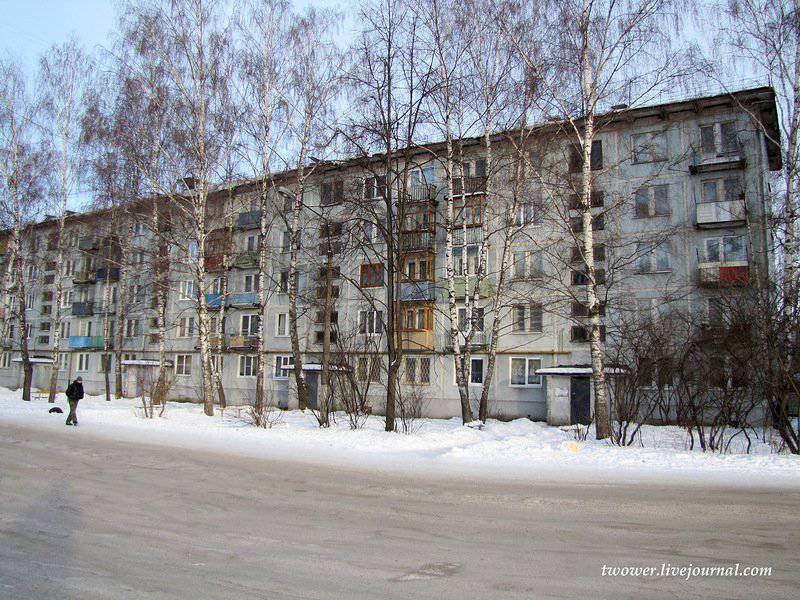
5.
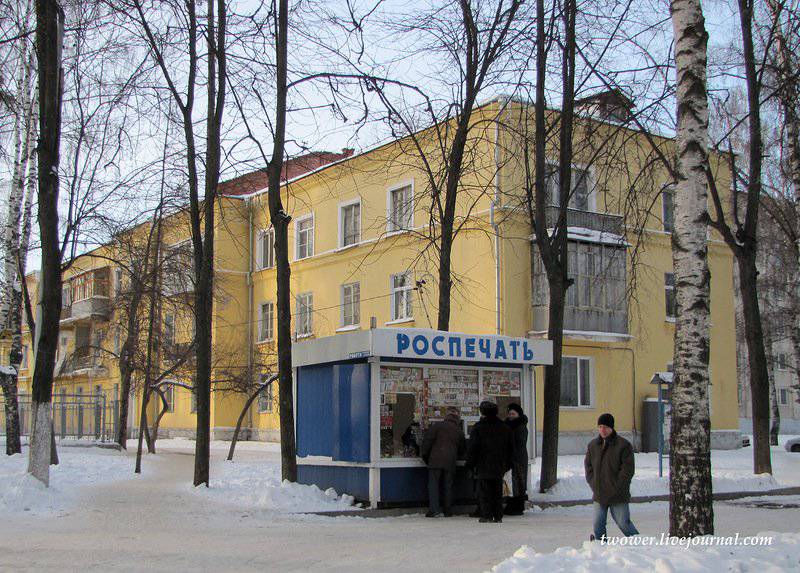
6.
The soldiers live in the barracks, where there are no newfangled Kubrick, the location is common.
In the training battalion
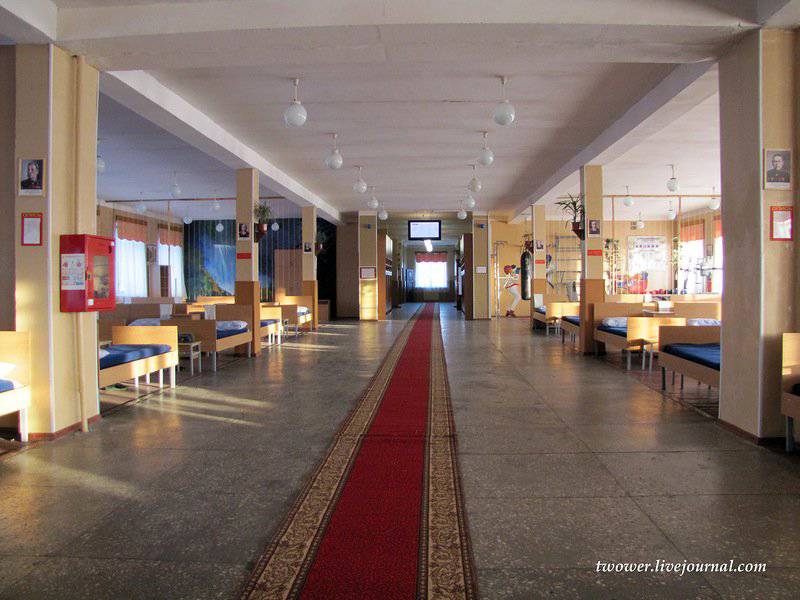
7.
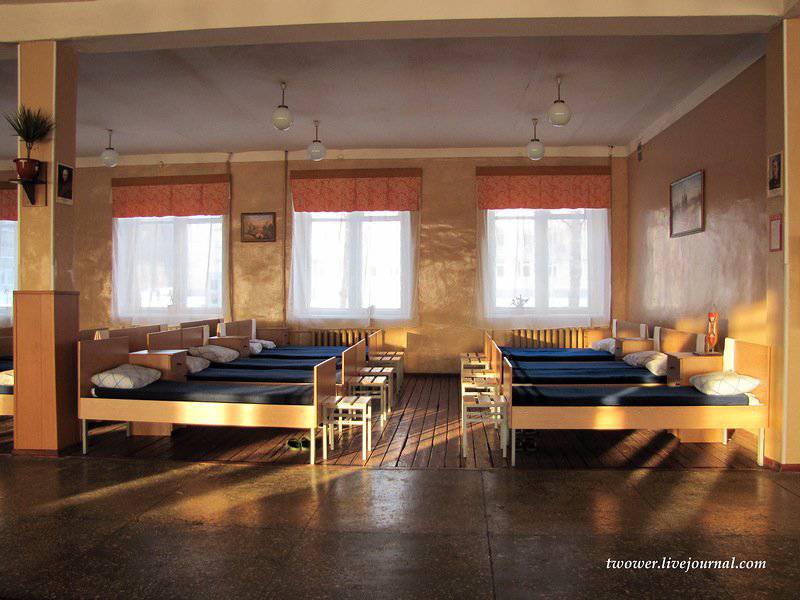
8.
Sport corner
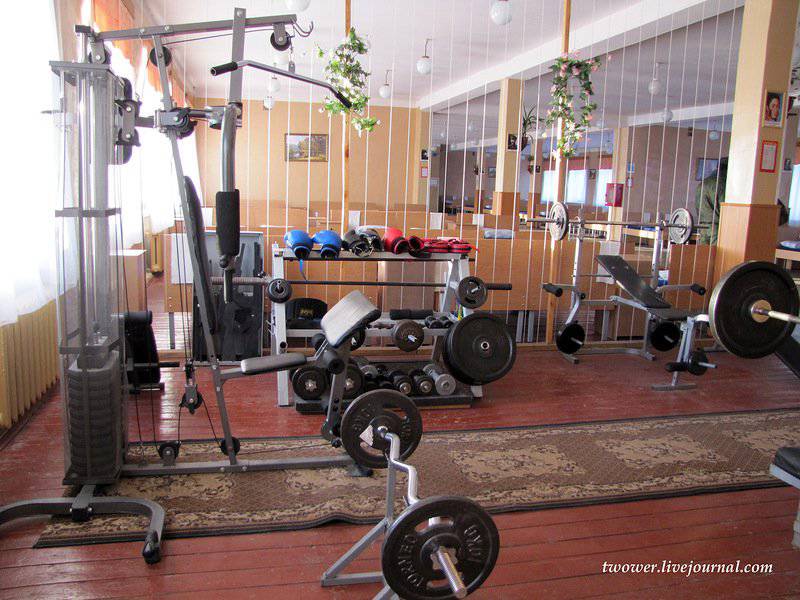
9.
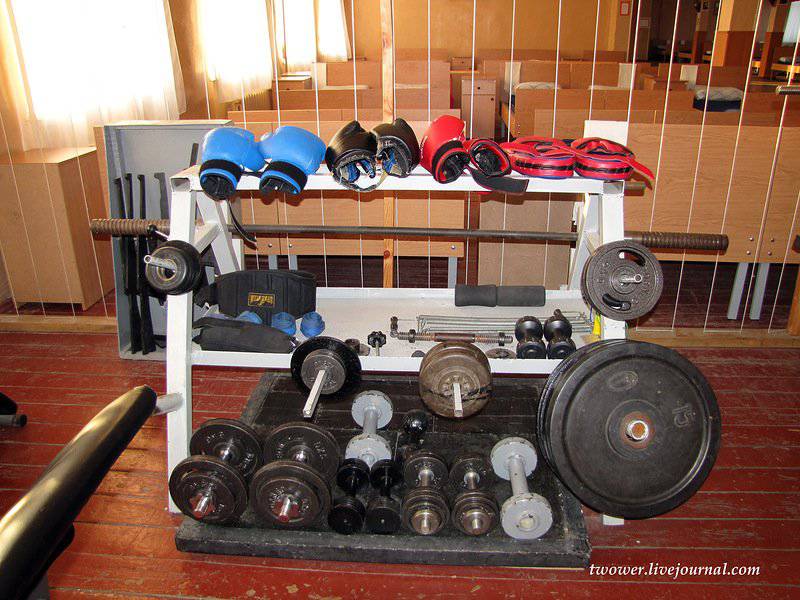
10.
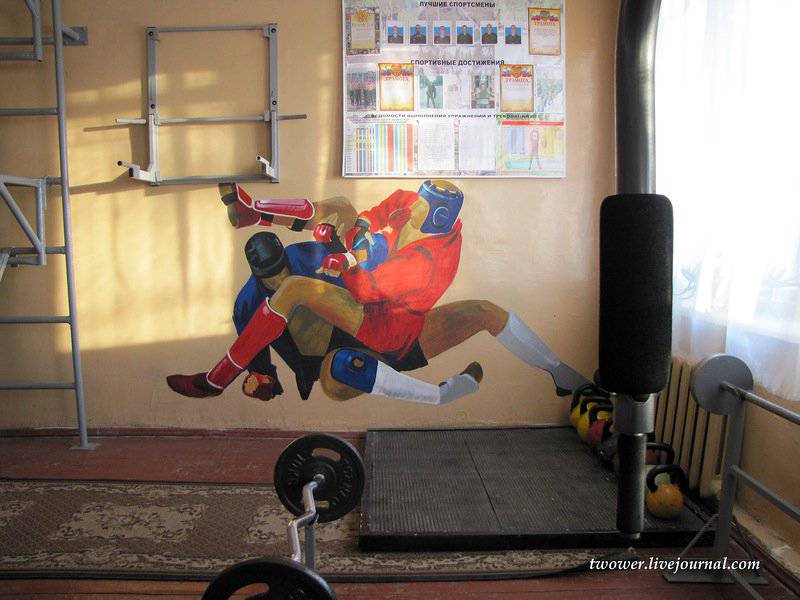
11.
Household room
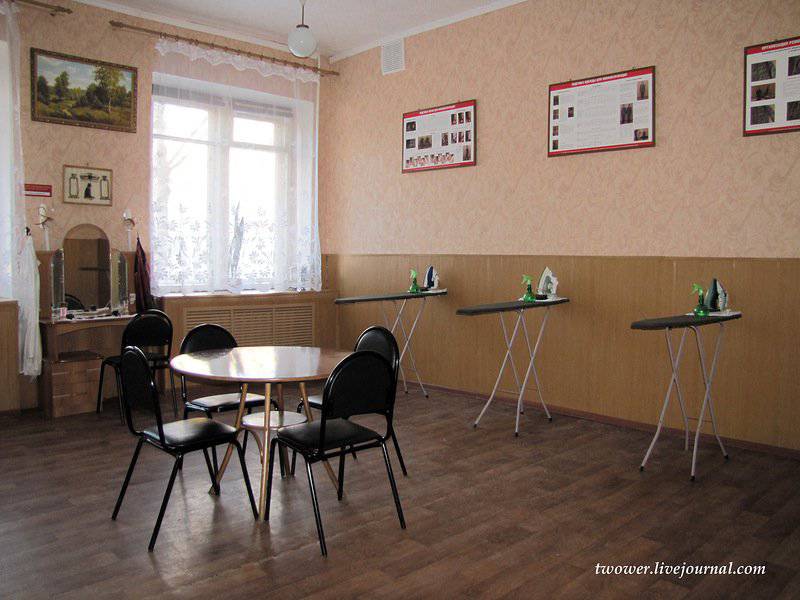
12.
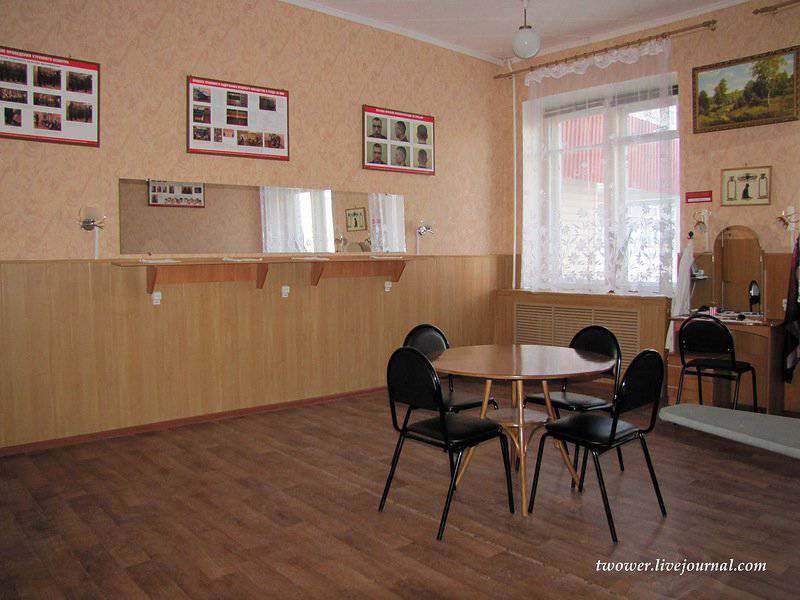
13.
Leisure room
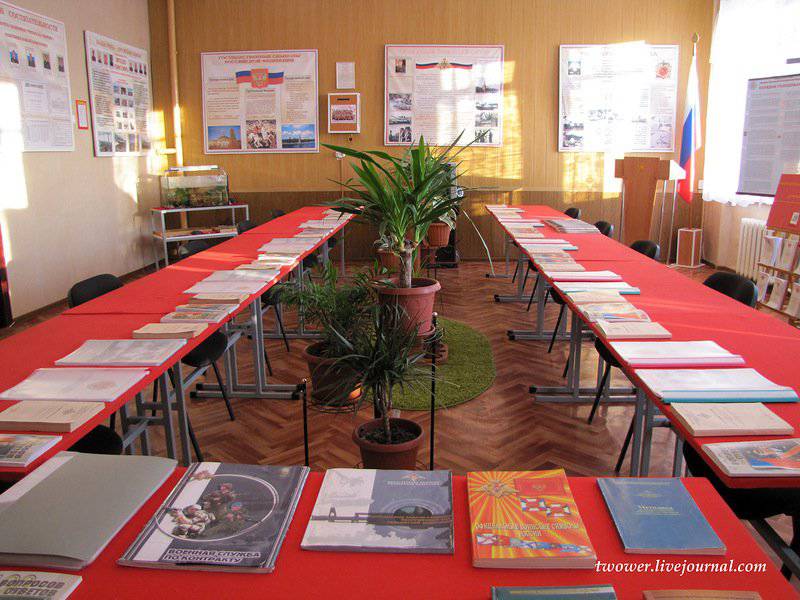
14.
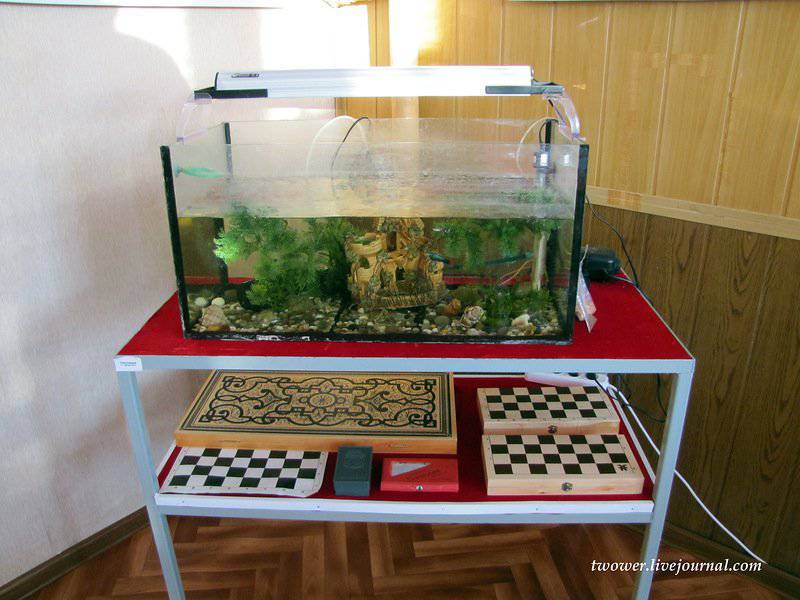
15.
Corner for believers
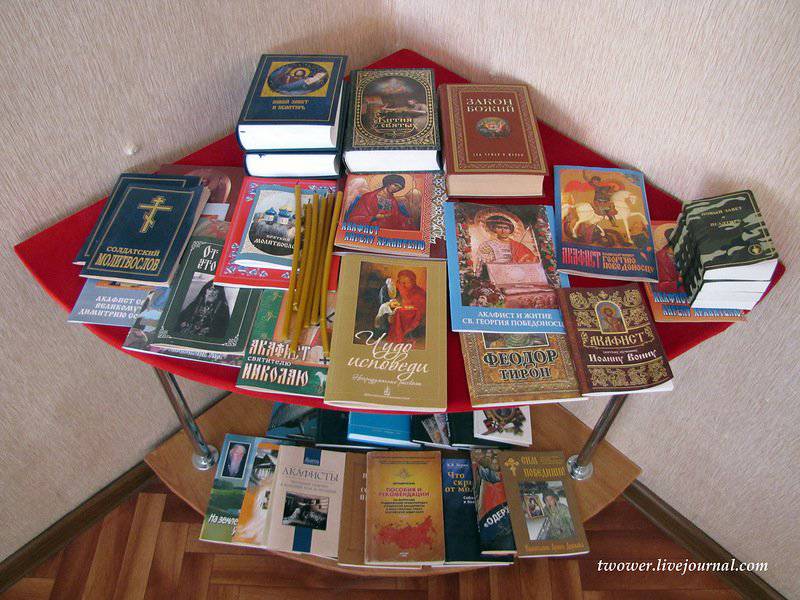
16.
A reminder of what awaits for offenses
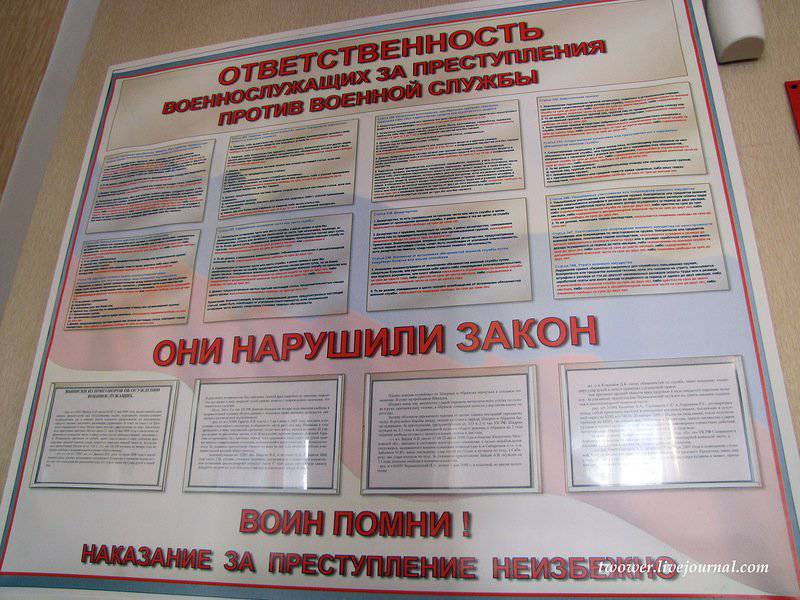
17.
The barracks are equipped with video cameras that transmit the image directly to the monitor of the duty officer on the part
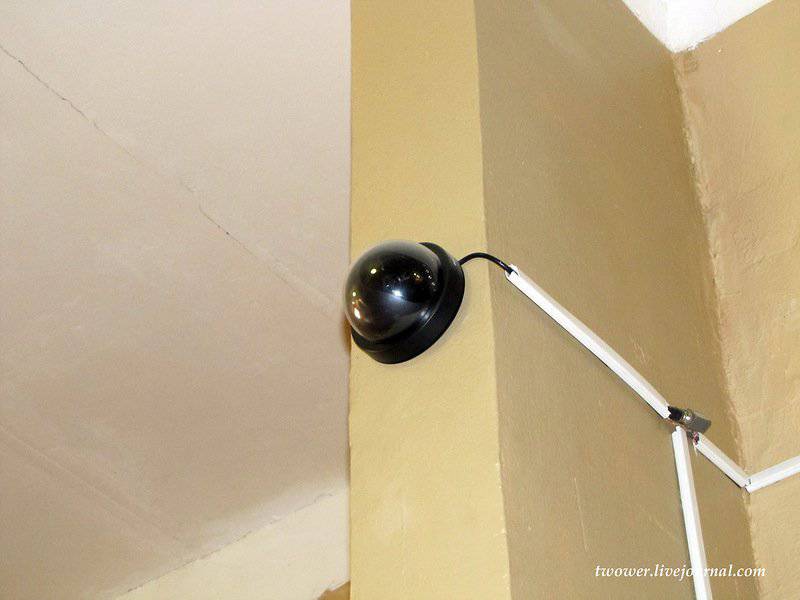
18.
Washbasin
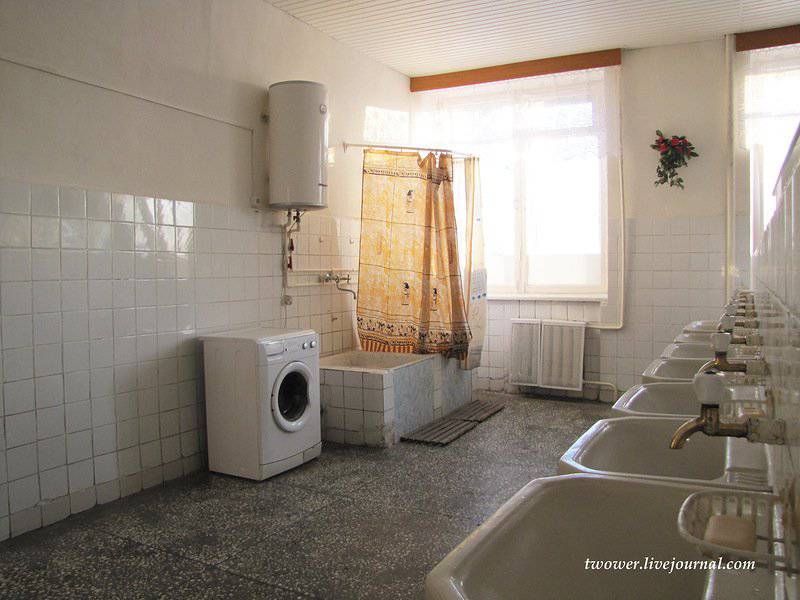
19.
Restroom
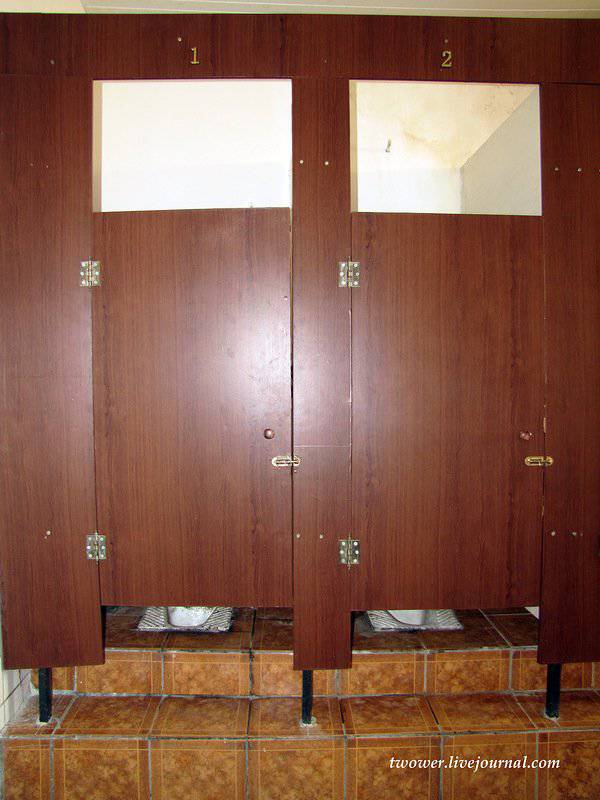
20.
Separately pleased with a bottle of water, in an army way lovingly sealed (so as not to throw up something!)
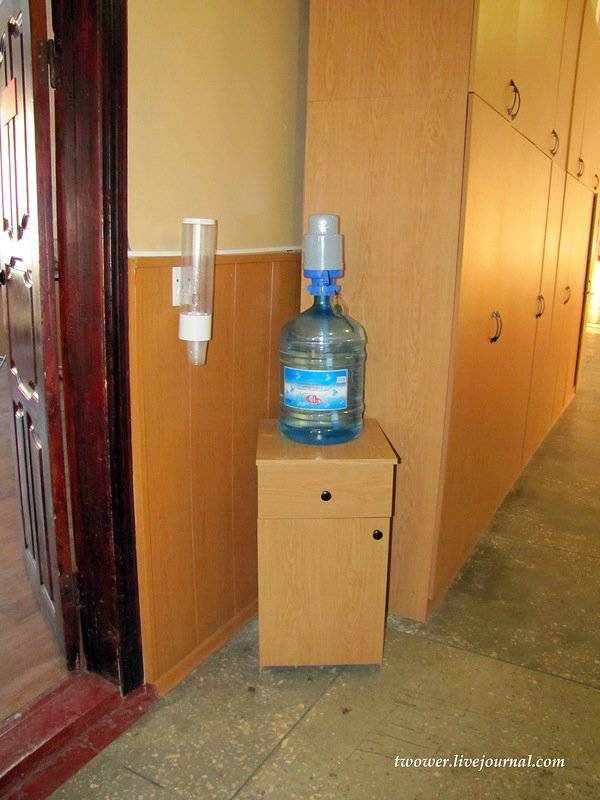
21.
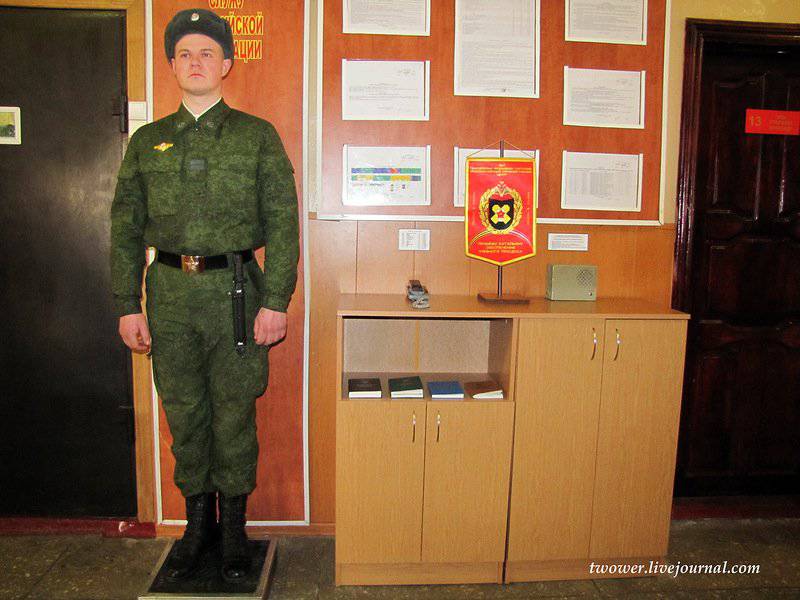
22.
One of my friends asked me to photograph the location of the 3 training communications company in which he had once studied. Please, but it is now on the 4 floor, but it used to be on 3, so it may not be quite right.
This is how cadet military servicemen live
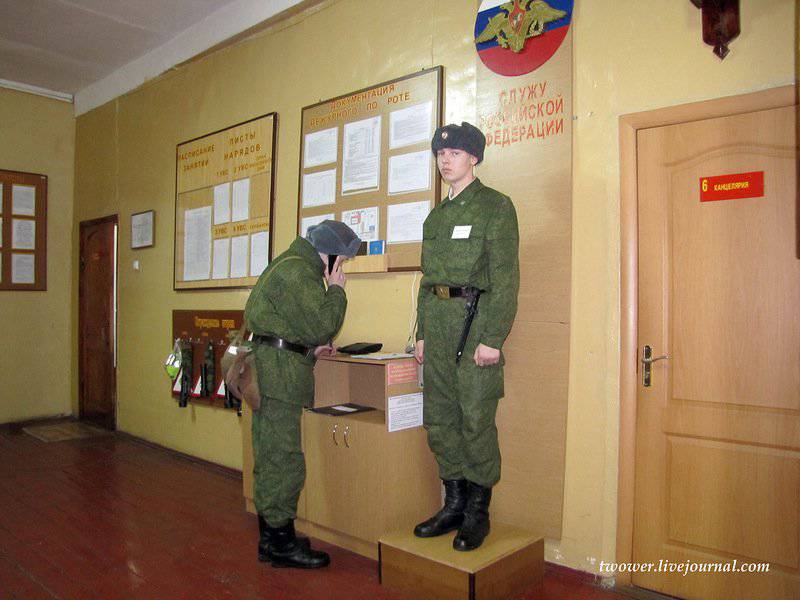
23.
In this barracks, beds are set in two tiers, in the training autoroot, for example, in one tier
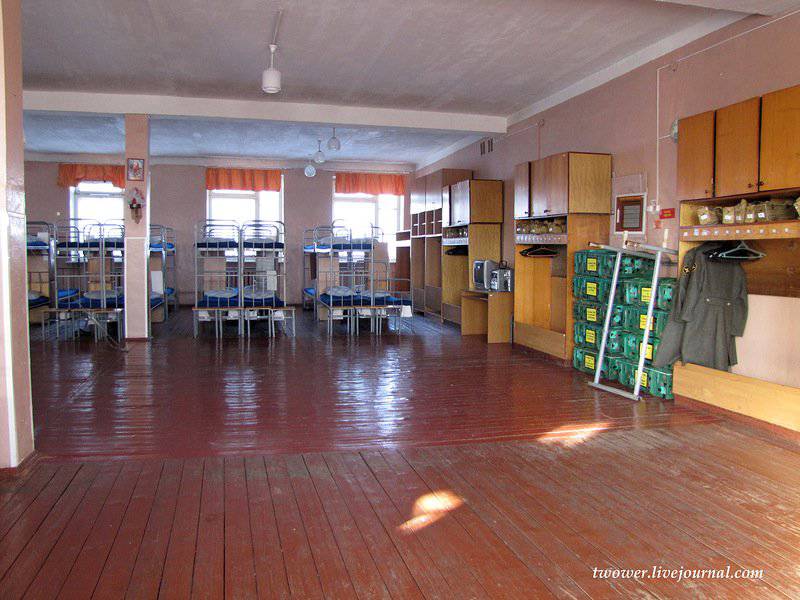
24.
Sports corner poorer
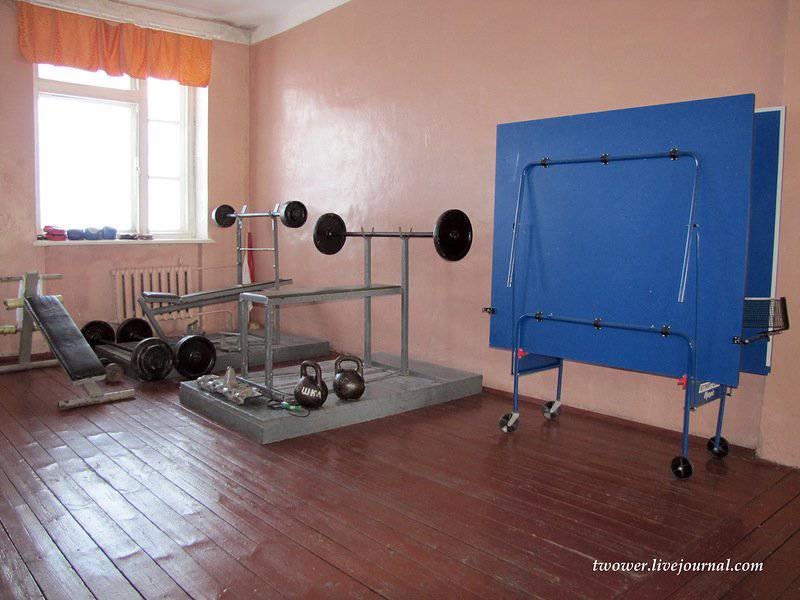
25.
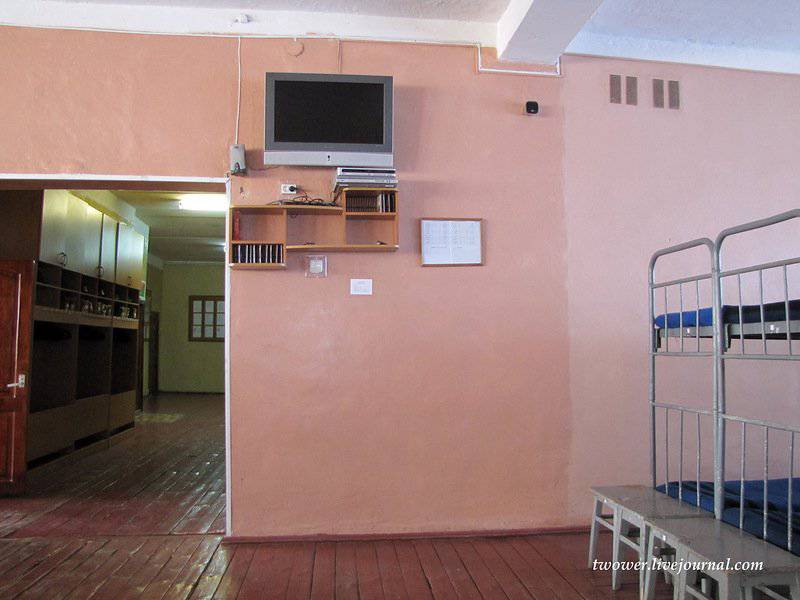
26.
Leisure room The computer, if anything, is not shared, but from the office of the company;)
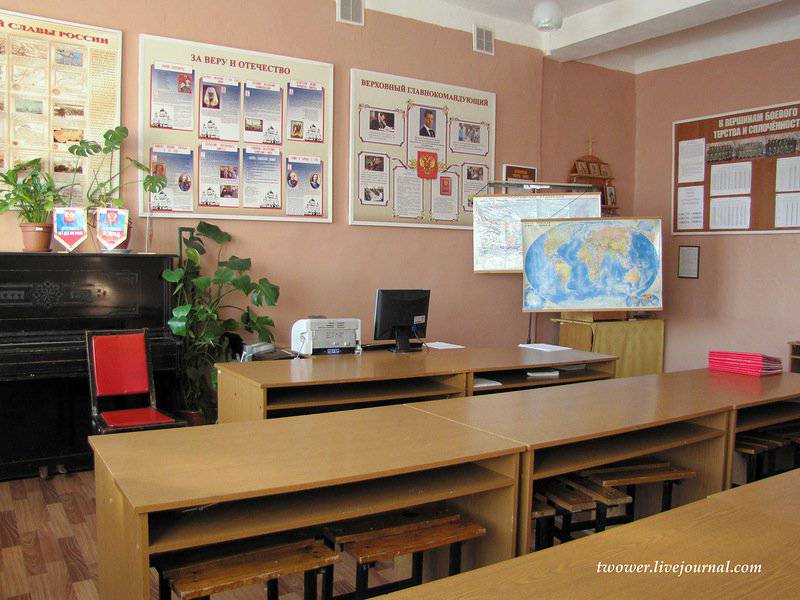
27.
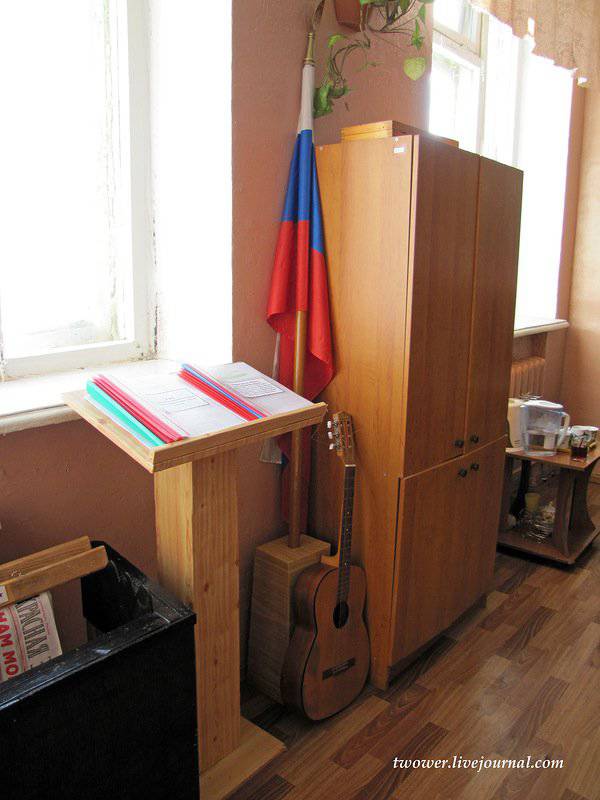
28.
The tool is not just worth it, and sometimes used. This soldier even managed to produce a simple melody. Although IMHO piano in a military unit is not too necessary tool
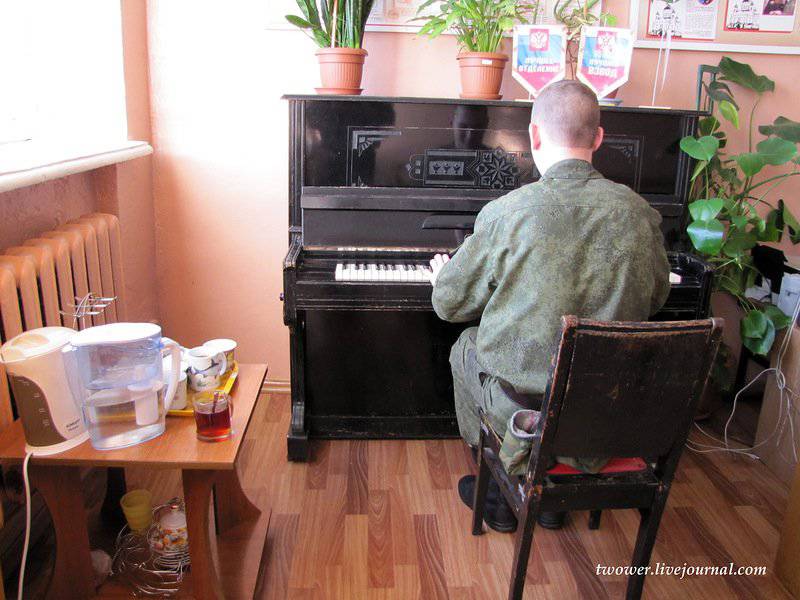
29.
Gym. Now he is training a football team that will compete in city competitions.
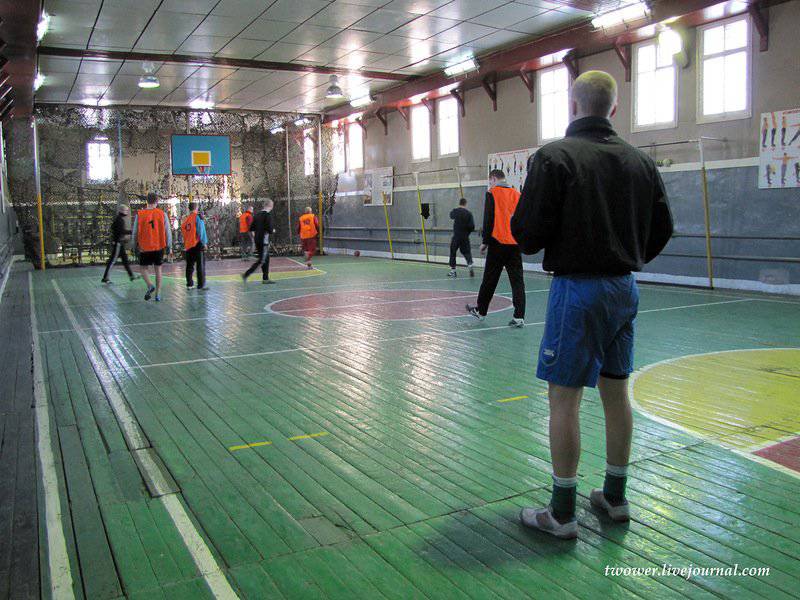
30.
Bathing and laundry complex is served by a civil organization. There are two washing departments: a large one (in it at the time of my arrival there was a bathing of cadets) and a small one. Photos taken in small (both sections are made equally)
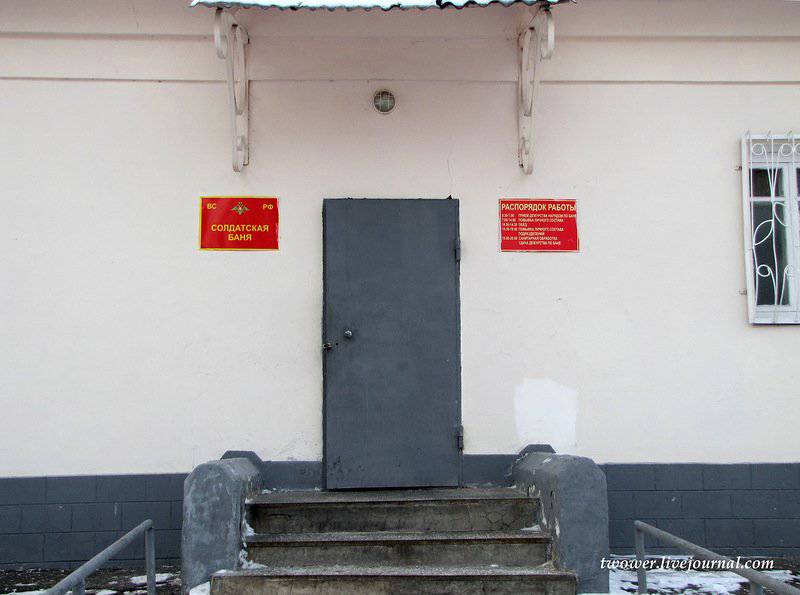
31.
The dressing-room
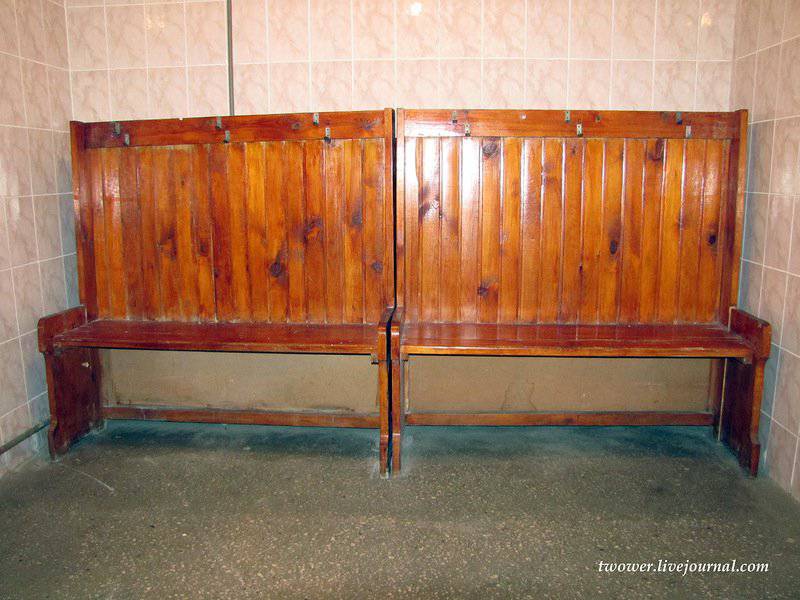
32.
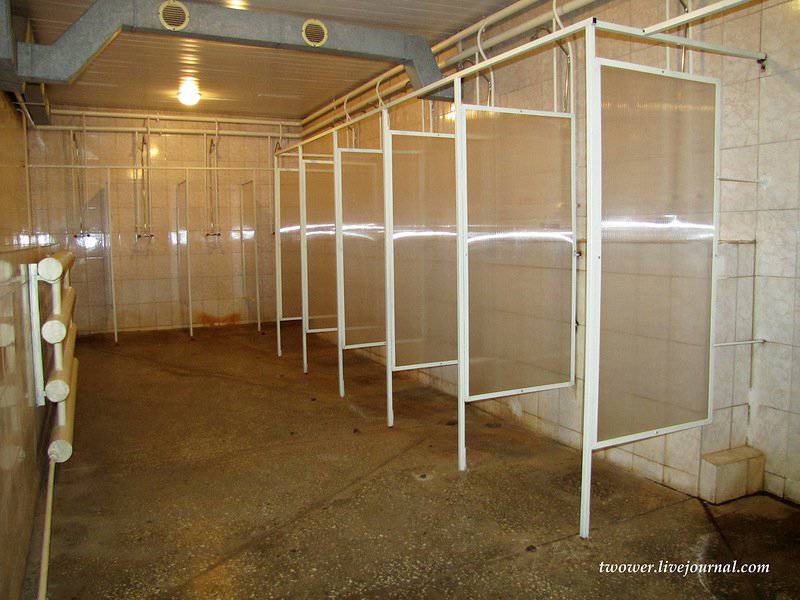
33.
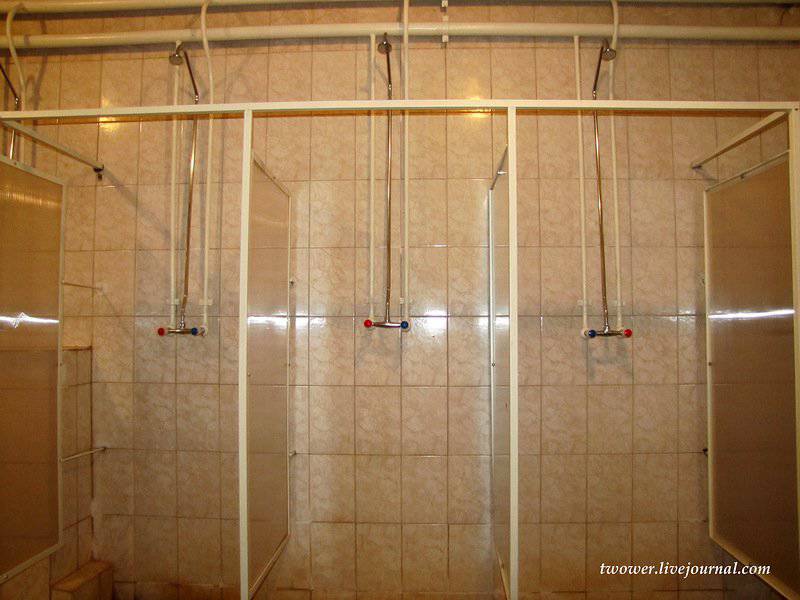
34.
Laundry: in the foreground centrifuge for spinning, behind - washing machine
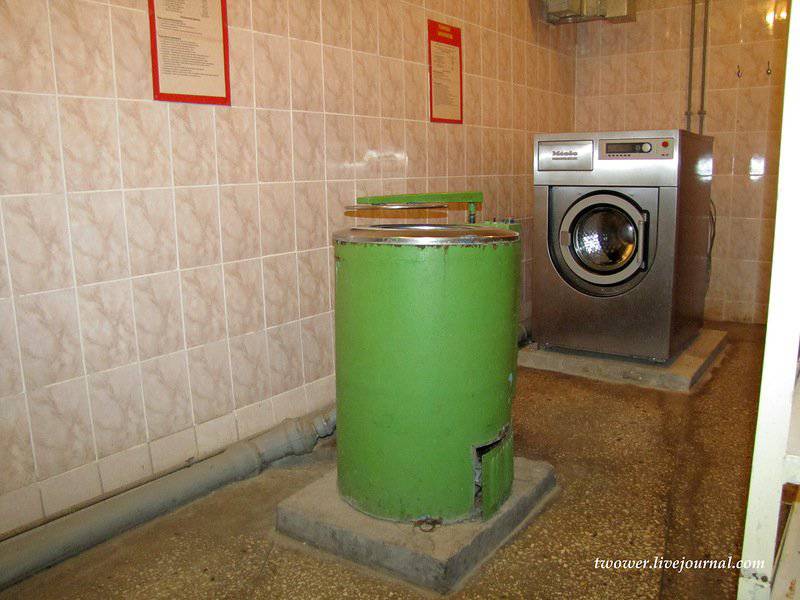
35.
TTH devices
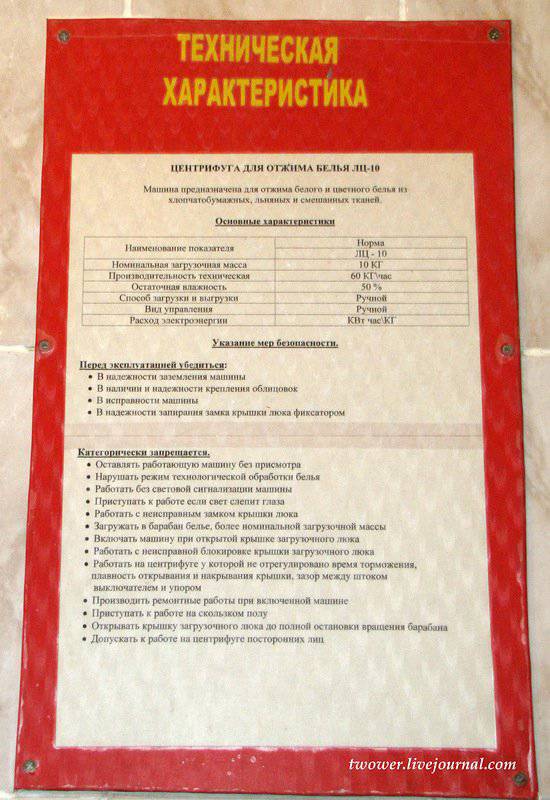
36.
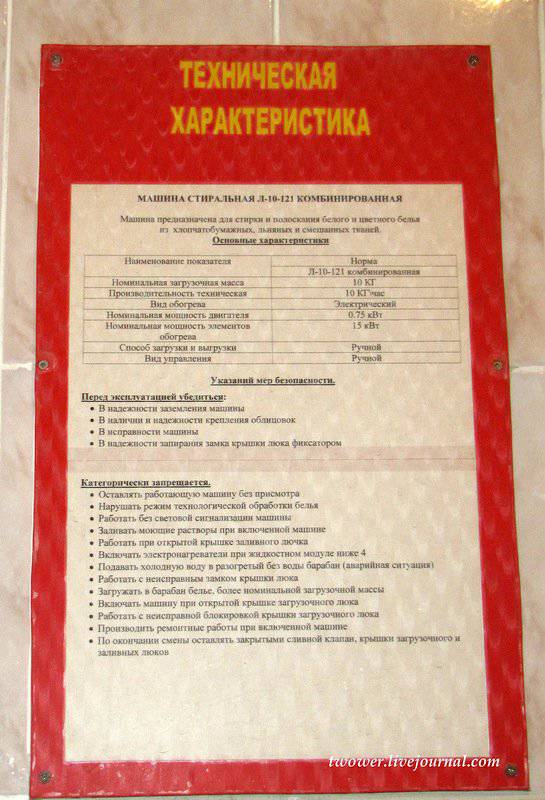
37.
Meals at the Center were outsourced last year. The previous company did not suit the customer in the person of the Ministry of Defense, so the new organization is working from the new year.
Menu can be read at the entrance
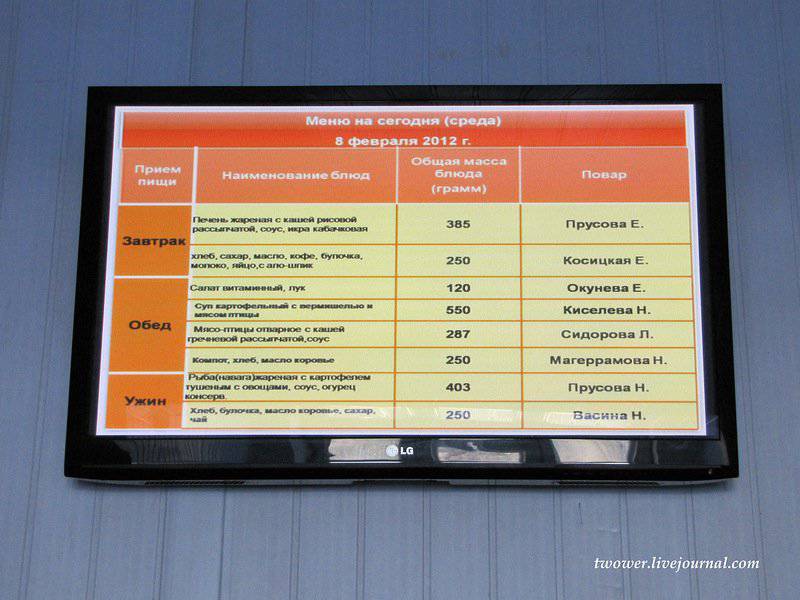
38.
Contracts with firms are for a year, which slows down companies in wanting to equip their jurisdiction. It seems that in the future they should switch to the so-called. long contracts with proven service providers. Now the outsourcer performs only maintenance of the equipment and the building, while the customer, the Ministry of Defense, is obligated to do capital repairs.
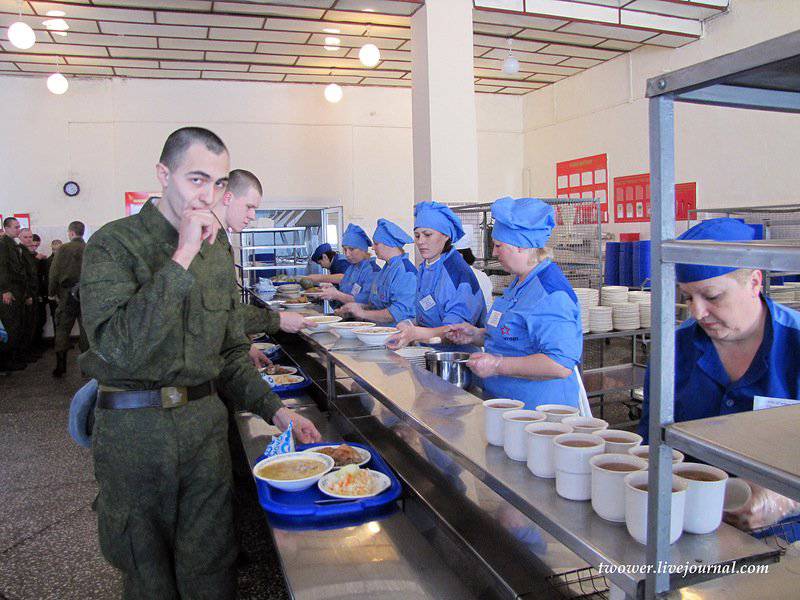
39.
If it is profitable to service a connection with a large number of personnel, then small parts are often served with almost zero profit, or even unprofitable. Therefore, outsourcers tend to get contracts with several parts at once in order to increase profitability.
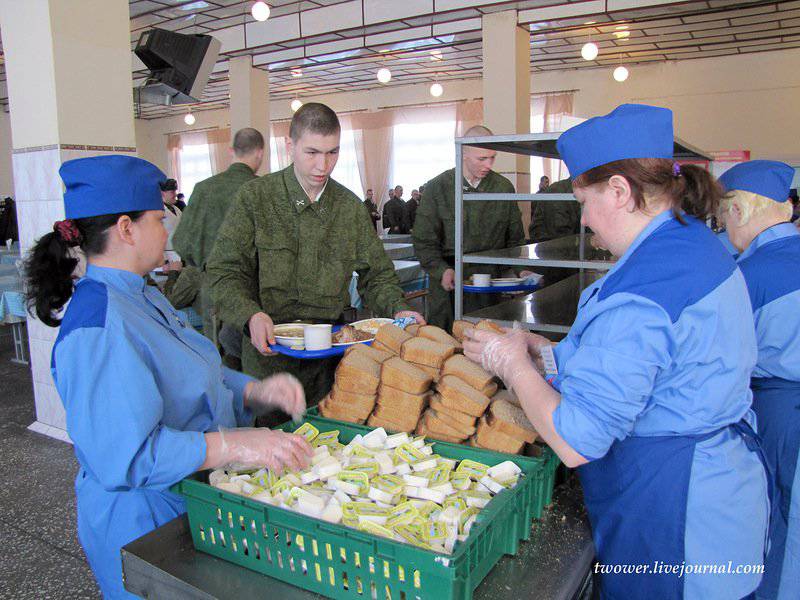
40.
The layout of the products approved by the commander of the part in the framework of allowances. Part of the products purchased according to GOST (for example, sausages, meat, cereals), part of the TU (for example, dumplings, spices). Every day, an act of performance of work on the provision of food to the staff is signed. If the controlling officer has claims: inconsistency of allowances (products are “forgotten” to report), poorly cooked food, the outsourcer will be fined 4000 MROT (ie 400 000 rubles). In case of further problems with the quality of work, the contract with him can be terminated.
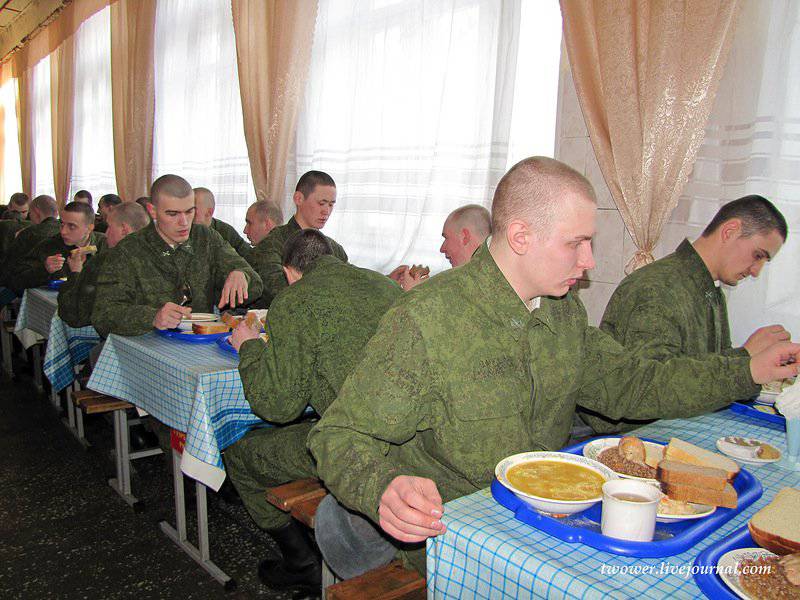
41.
Lunch pattern
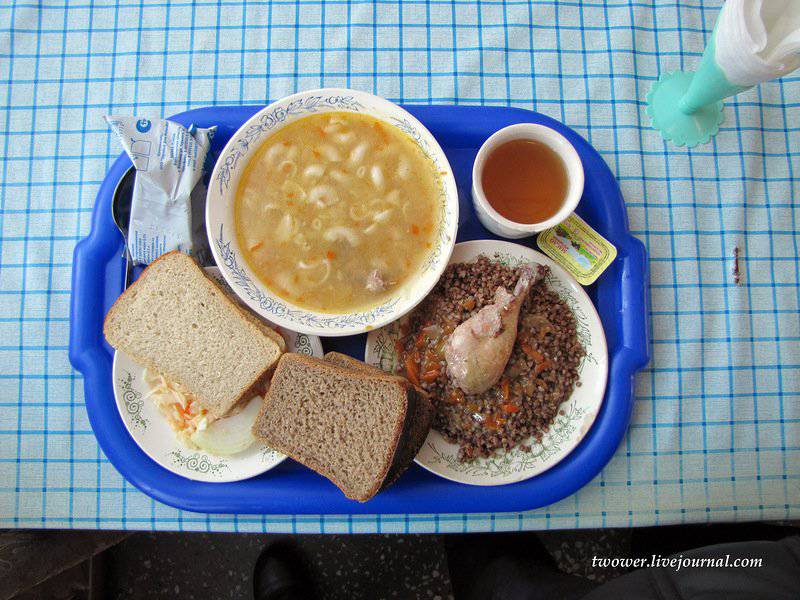
42.
In March of this year, a contract should be signed with cleaning companies for cleaning the territory of the Center, as well as a contract for the repair of equipment. Now military units are attributed to certain repair plants that will serve the needs of the military in any repairs and maintenance.
Psychological service brigade.
The staff of 14 psychologists, no jobs. Last year, we received three automated workplaces of a psychologist (more about them here), this year two more will come, which in principle allows us to cover the current need for them and reduce the shaft of paper work. The salaries of psychologists, as he used to say, are very small: the head of the psychological aid center is 7 300 rubles, the psychologist is 5 600, therefore the work is supported by enthusiasts of military reserves, and young graduates of specialized universities who want to earn experience.
The service works for a couple with a part of the medical commission, which examines all cadets upon arrival and identifies people who are not suitable for continuing to serve. Over the past year, for example, 20 people were sent for psychiatric treatment (minus employees of the military registration and enlistment office). In this appeal with the 4 group of NHRIs (persons who should not be allowed to carry orders and guards with weapons) very few cadets, less than 0.1%.
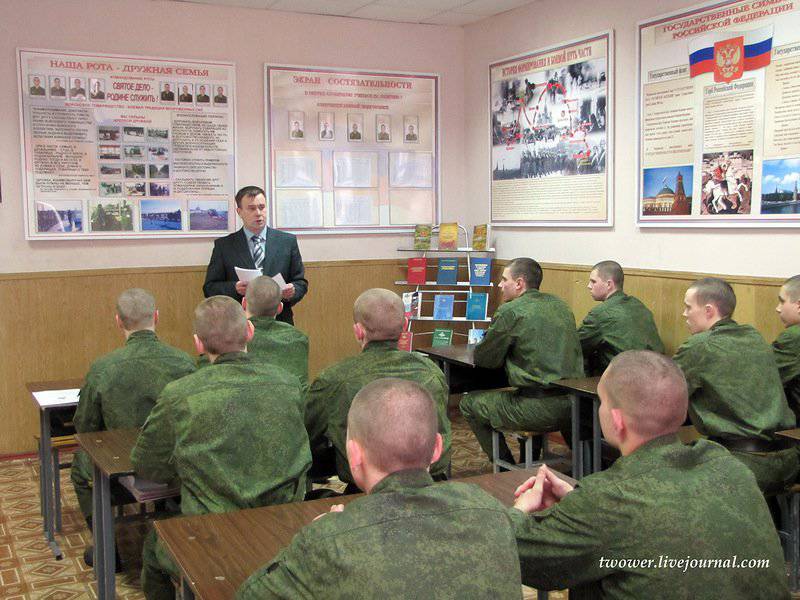
43.
Sample anonymous questionnaire for students
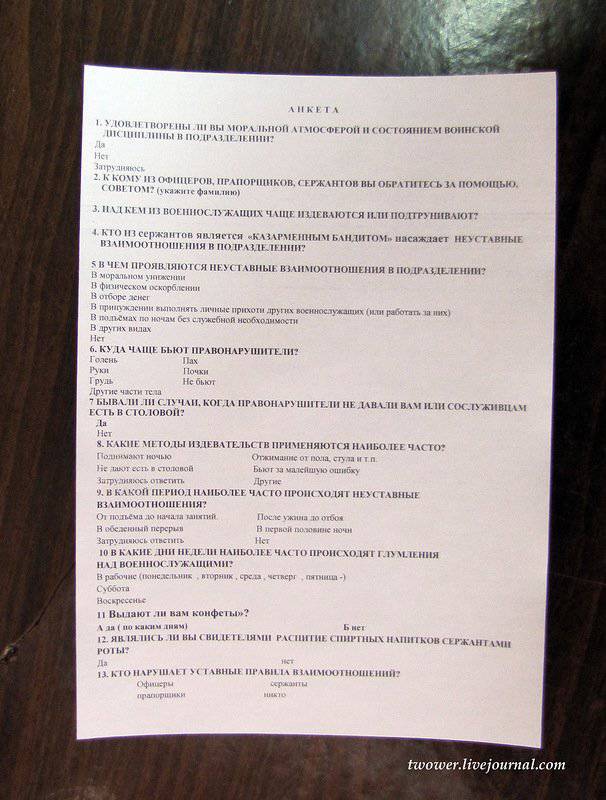
44.
Concluding the everyday topic, I will tell you about the money question. The officers were pleased with the increase in payments, but in previous years the Center paid bonuses for the 400 order, so the habit of good was even earlier. Some even regret that the premium was canceled. From the new year, servicemen on conscription were also paid a salary, and now they all receive thousands of rubles monthly on 2. Payments to officers and soldiers are made on the cards of Sberbank
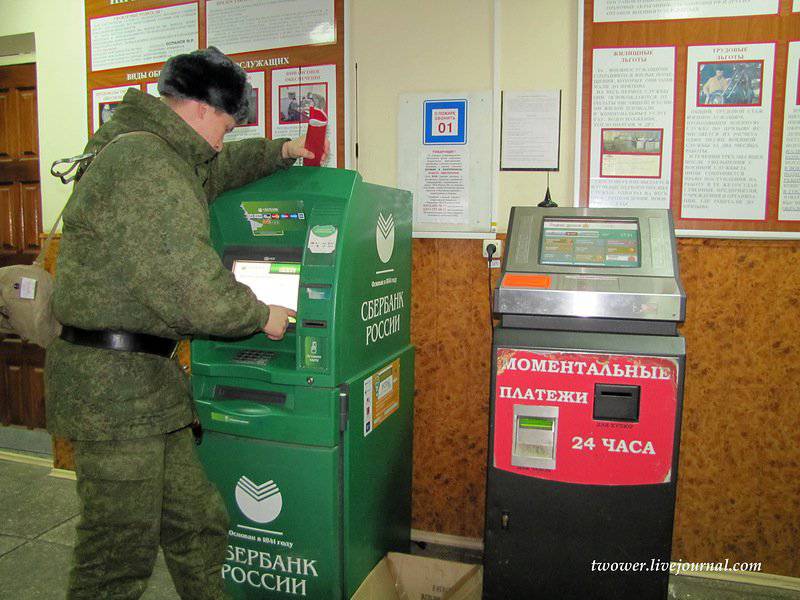
45.
Classes.
I myself served in the training part of 1998-1999 and I can’t remember anything good about learning. Mainly, they were engaged in chores in the territory of the unit, or at the “uncle” outside, bored for hours on the parade ground, or “died” on the endless pumping by the sergeants. Well, it was generally the norm of things to rattle on different parts of the body from the sergeant.
Now a lot has changed. You can easily sit down for a beat (see the cadets' videos below), and the lessons began to be held regularly and on time. The cadets, who will become commanders of motorized rifle squads, spend, for example, just 1 an hour a week, on a fire 7, on 8 tactics.
I remember that during the half year of study, we wrote no more than three or four sheets in a notebook for abstracts for the same number of classes and that's it. Now the theory is no longer formally
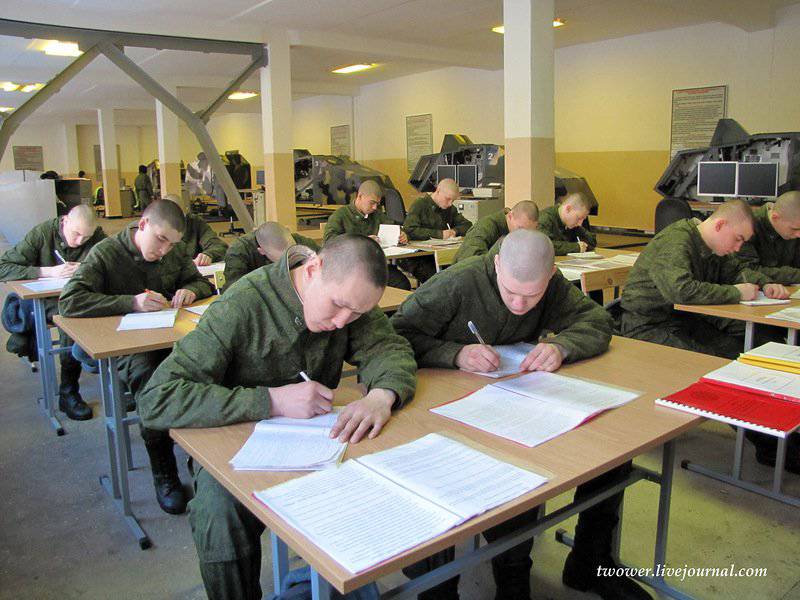
46.
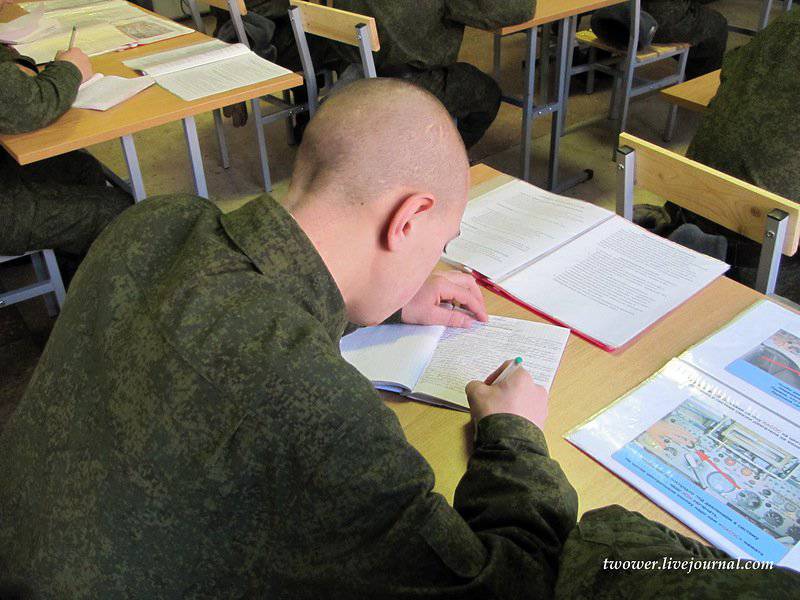
47.
All subjects are taught only by officers, sergeant-instructors are attracted only as managers at certain training places, for example, working out standards.
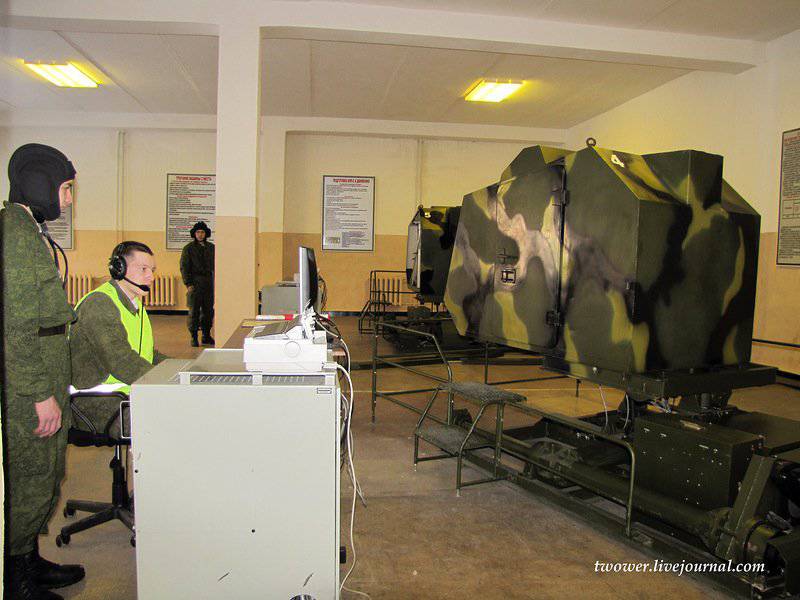
48.
These are simulators for training the BMP-3 driver mechanics.
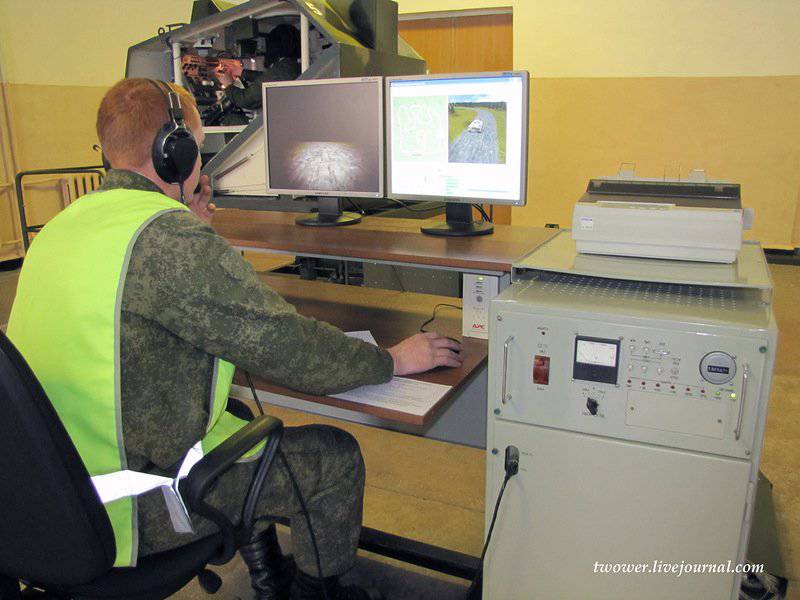
49.
Any movement parameters can be set: night or day, sand or snow, potholes or flat terrain.
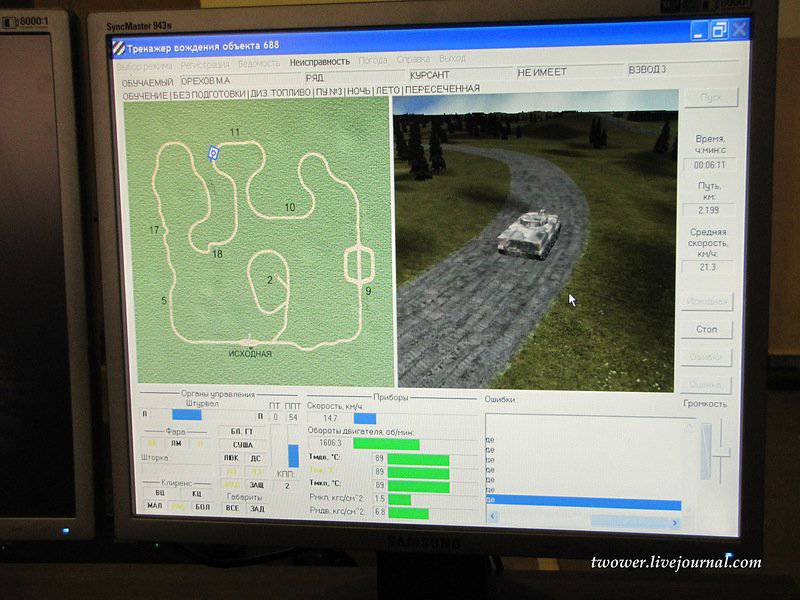
50.
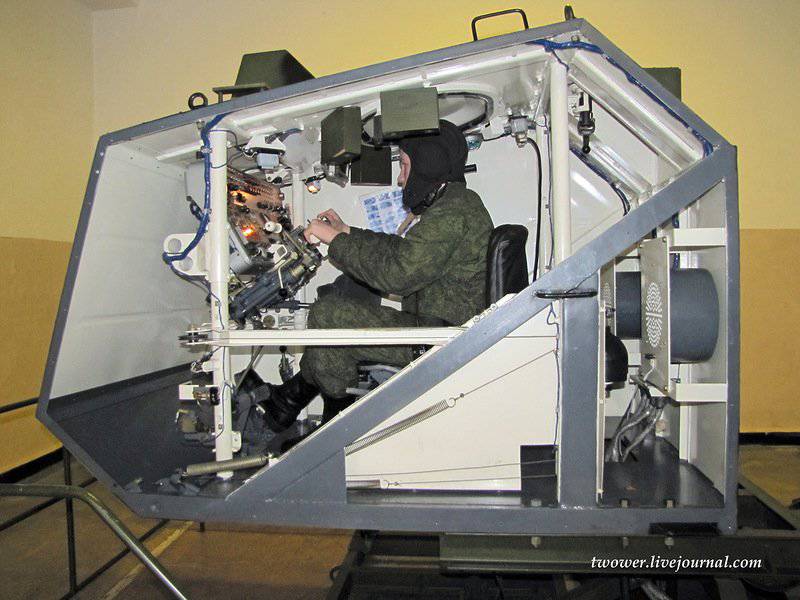
51.
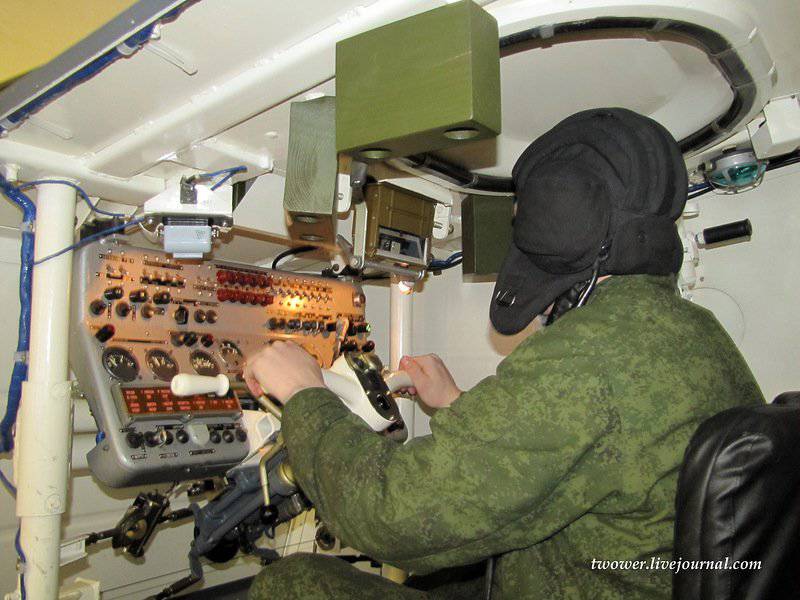
52.
Simulator driver-mechanic BMP-2
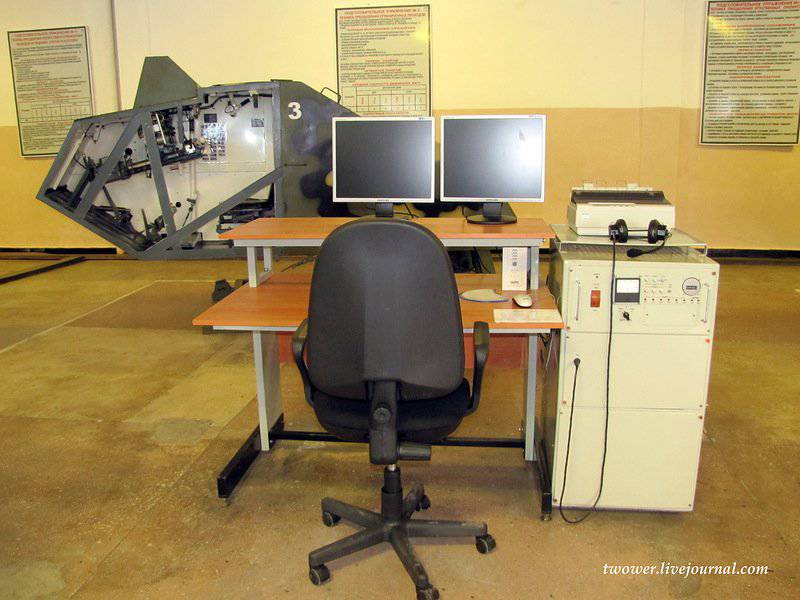
53.
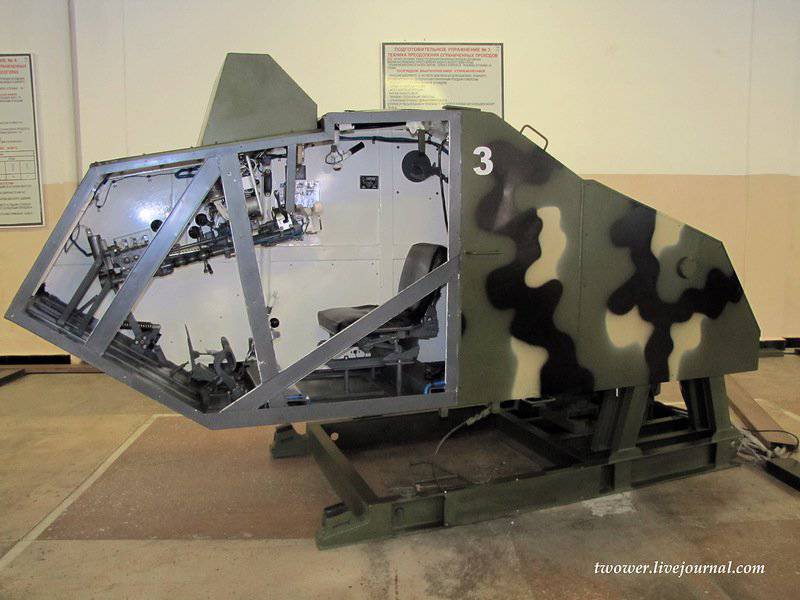
54.
The entire crew is trained in driving, but with a different number of hours. If for the driver this indicator is 96 hours, then for the commander and gunner-operator is 33 hours.
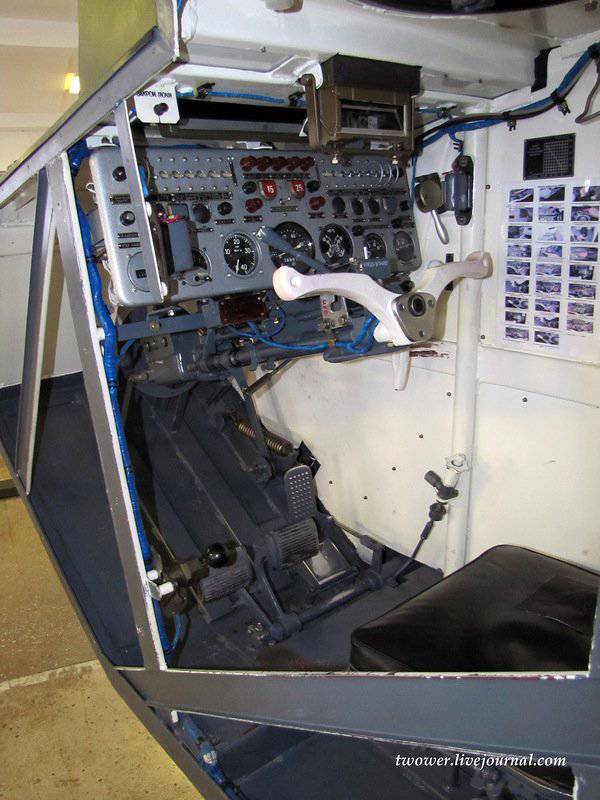
55.
Class for studying the device BMP-3 and its equipment
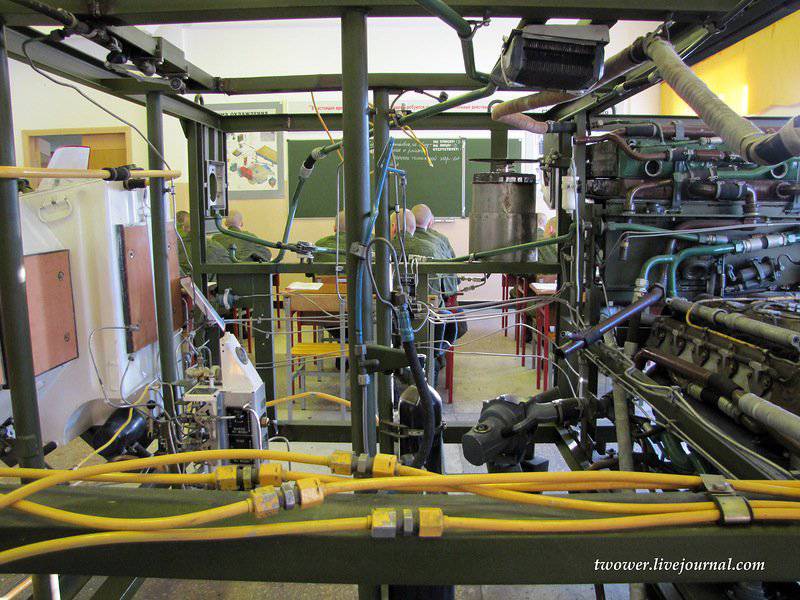
56.
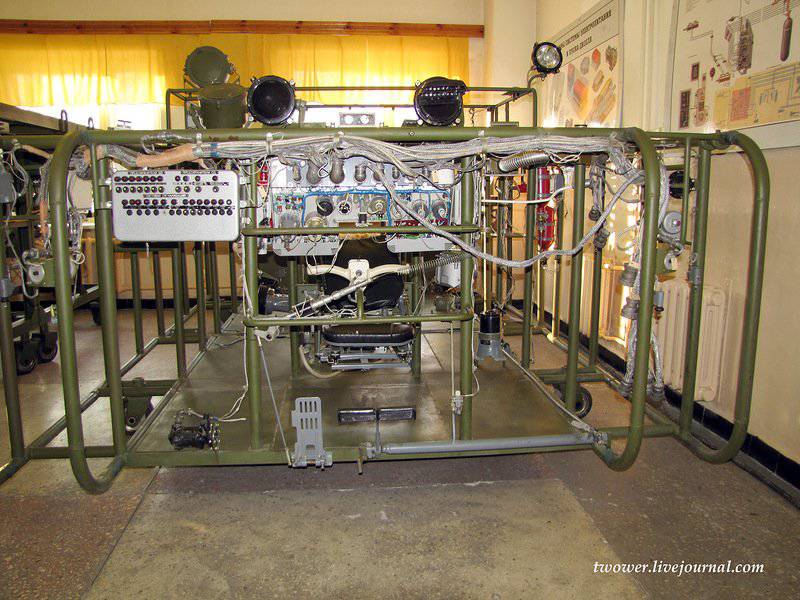
57.
Engine "three"
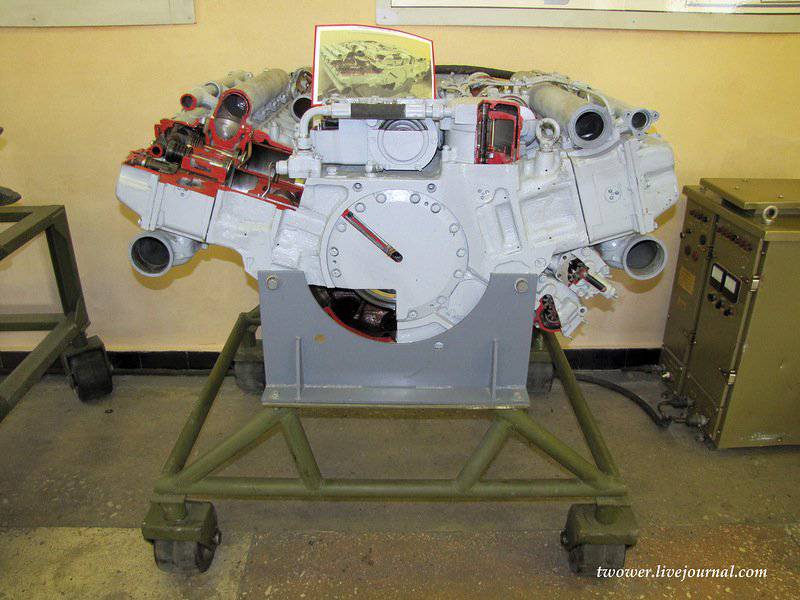
58.
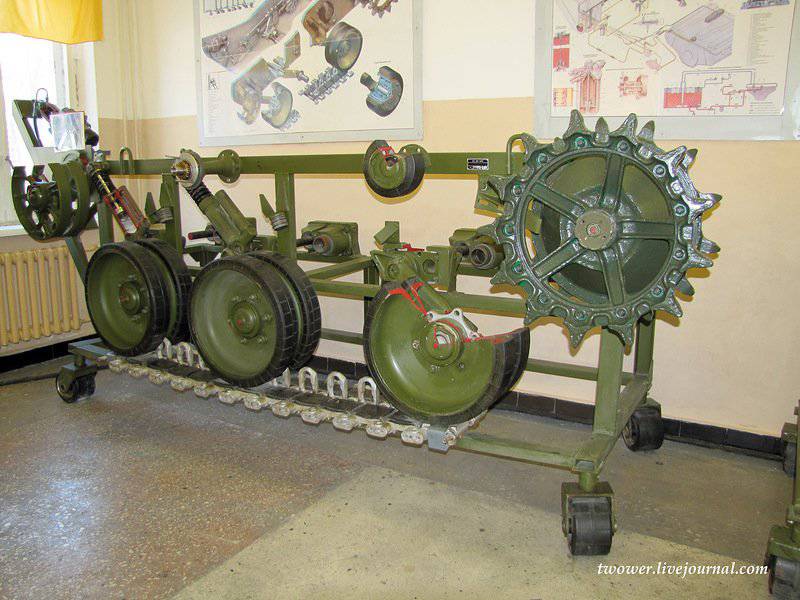
59.
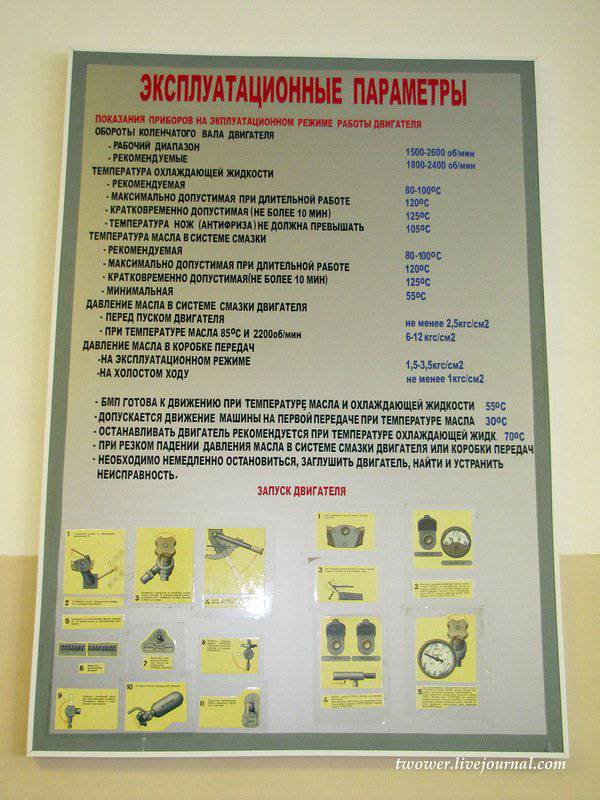
60.
In the training class for gunners-operators and commanders of the BMP-2
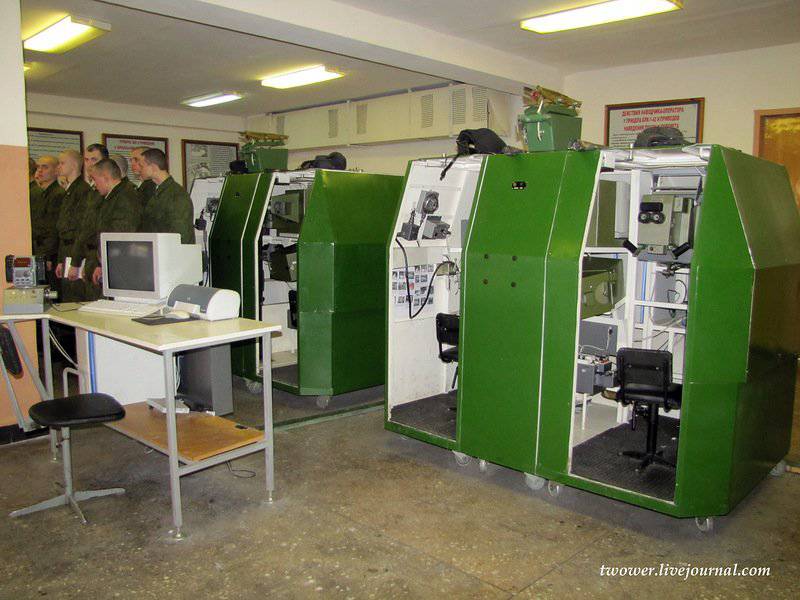
61.
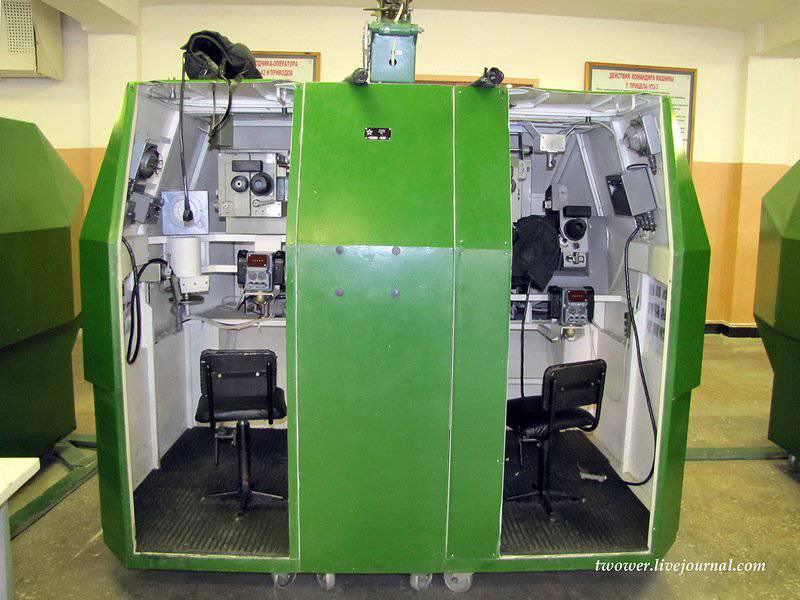
62.
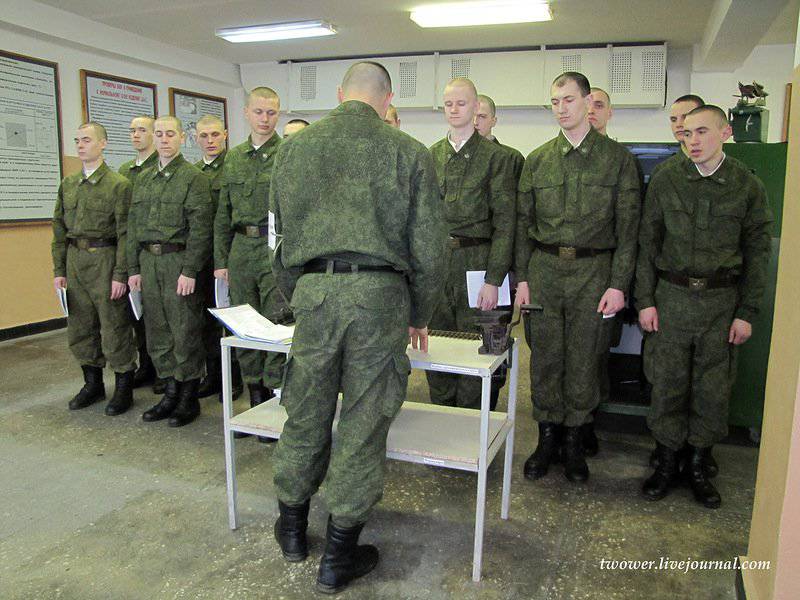
63.
Equipment ribbons to the gun 2А42
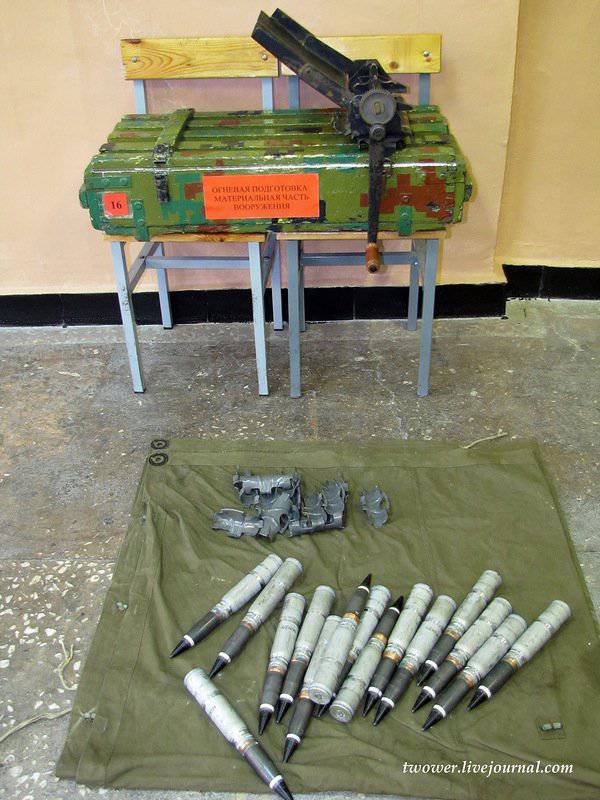
64.
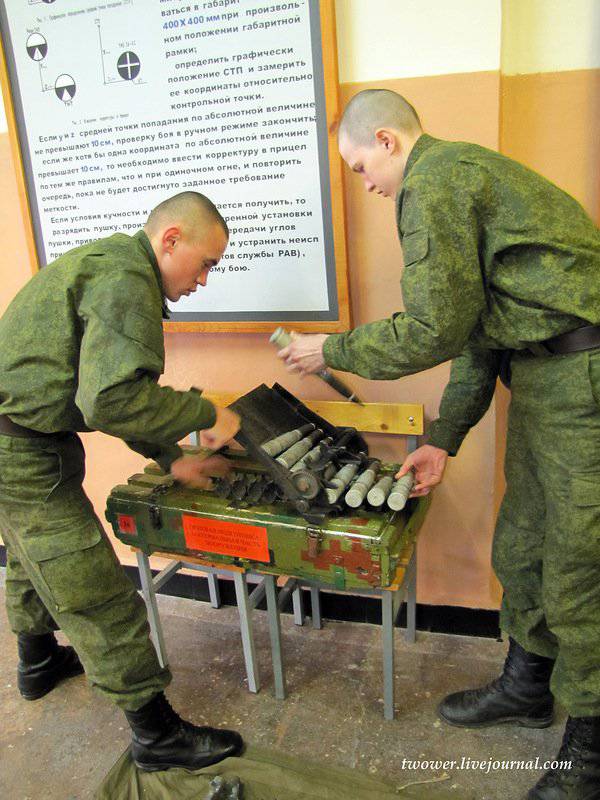
65.
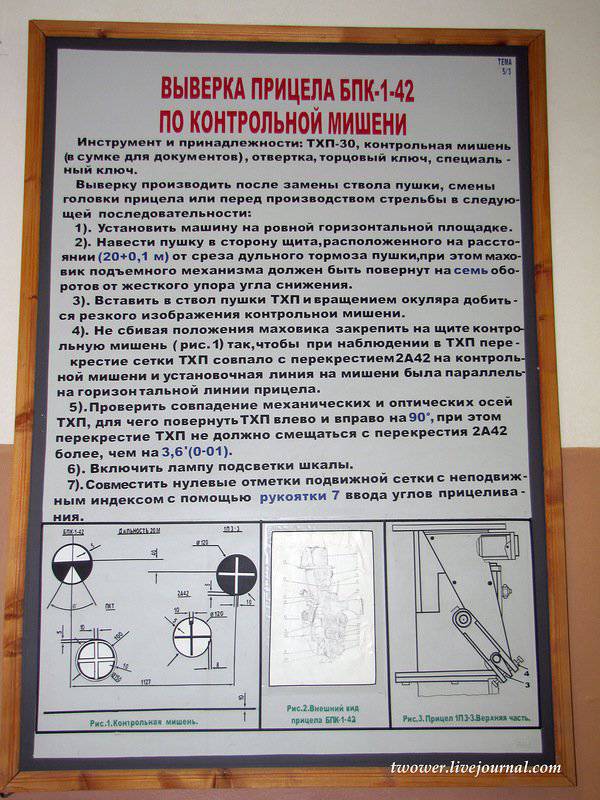
66.
Training on firing from an ATGM of gunners-operators BMP-2. I remember that in 1999 we didn’t go further than installing a rocket layout on the launcher
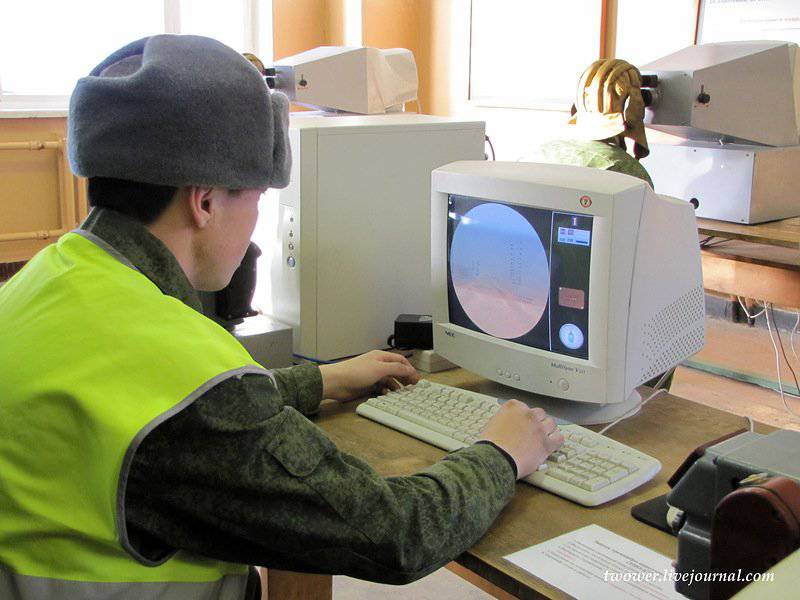
67.
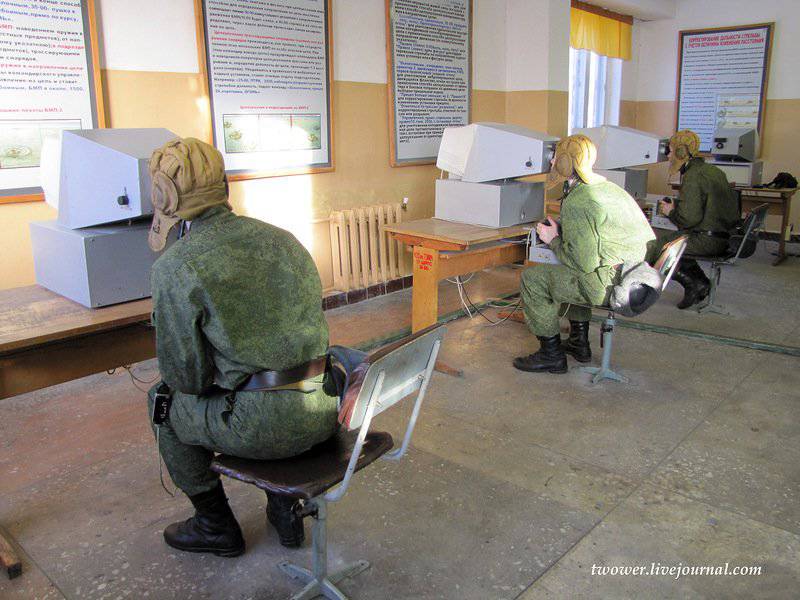
68.
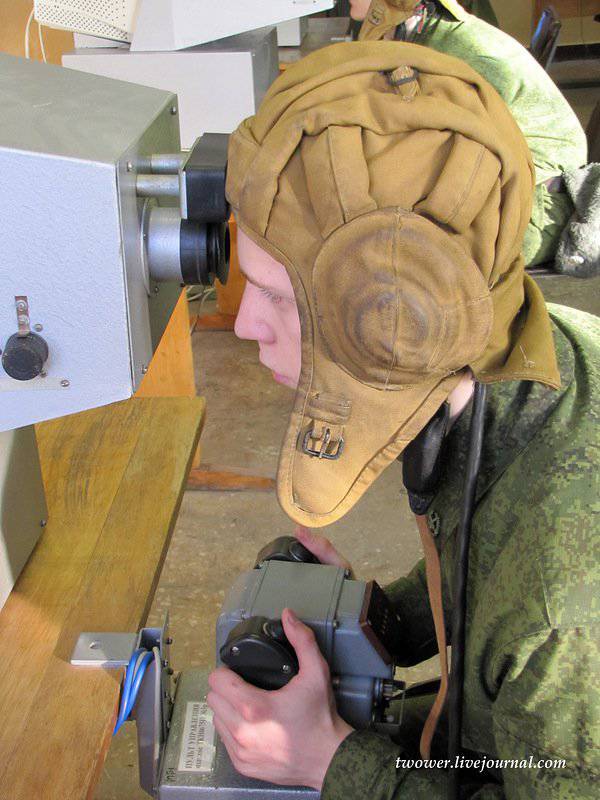
69.
Class for training gunners operators ATGM installations
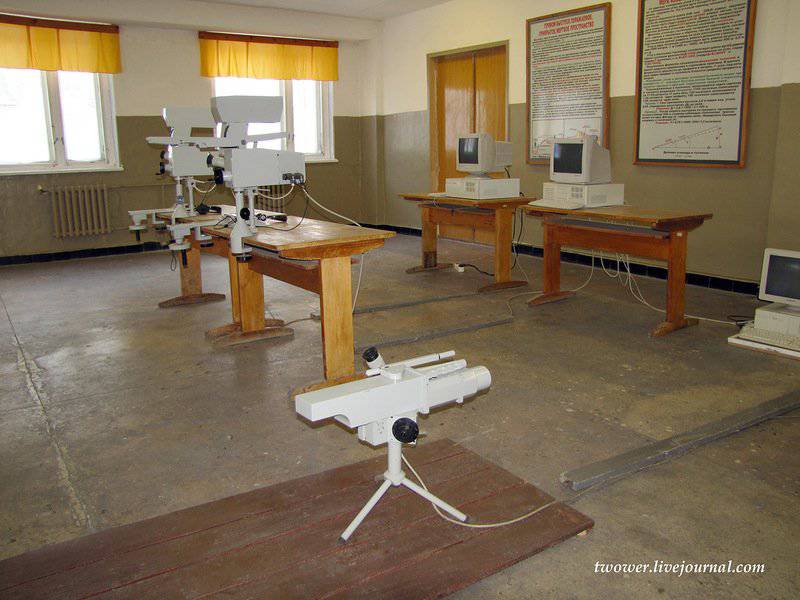
70.
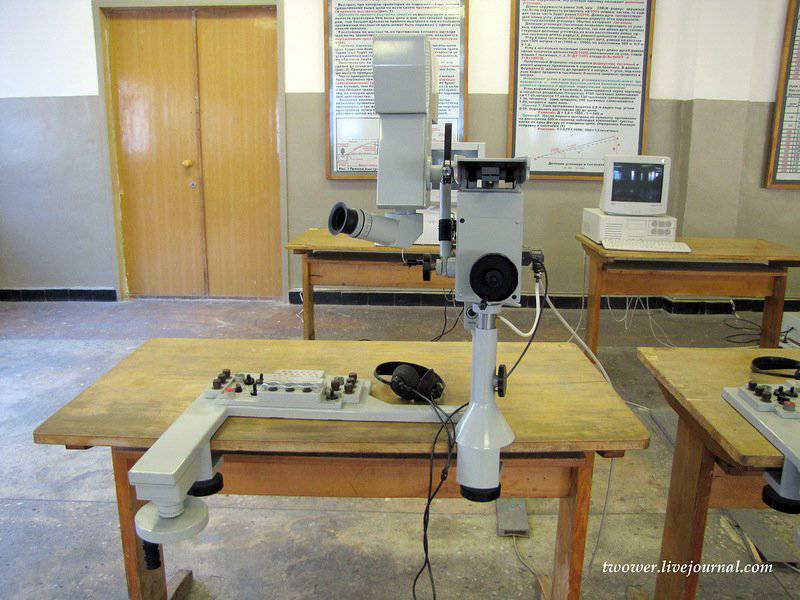
71.
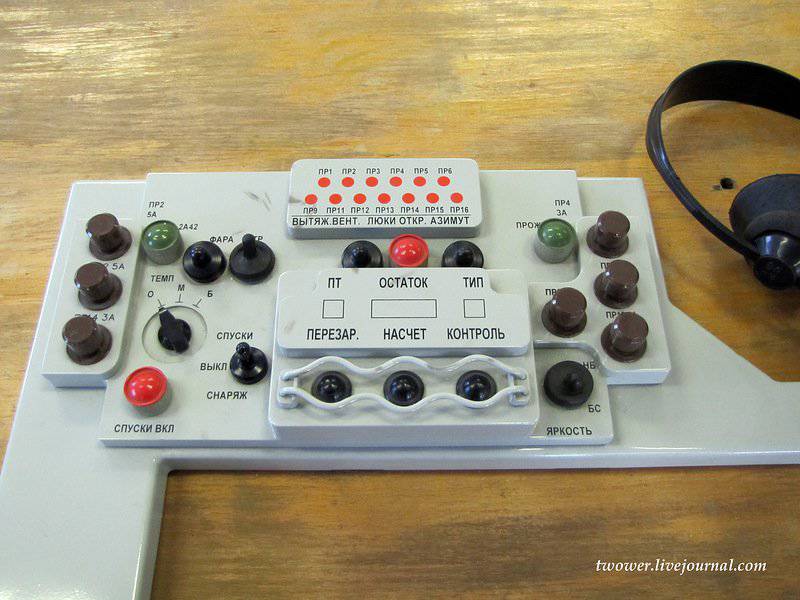
72.
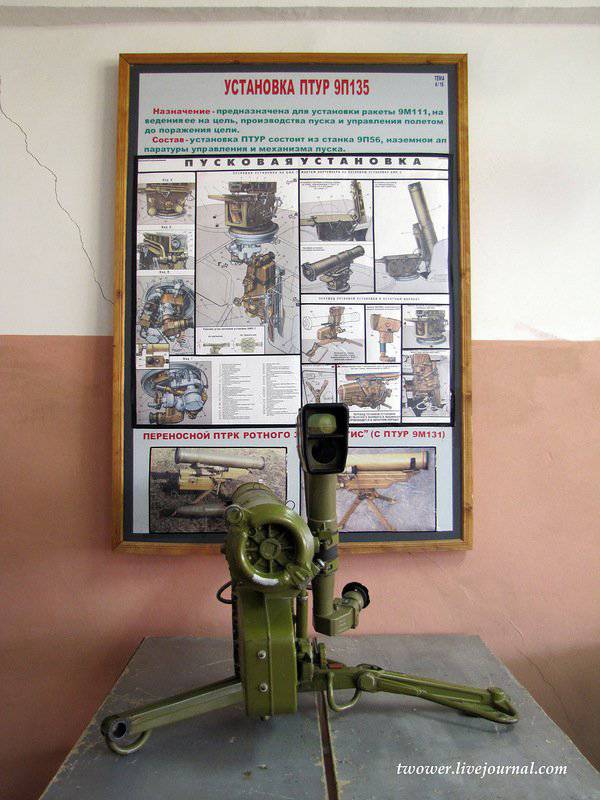
73.
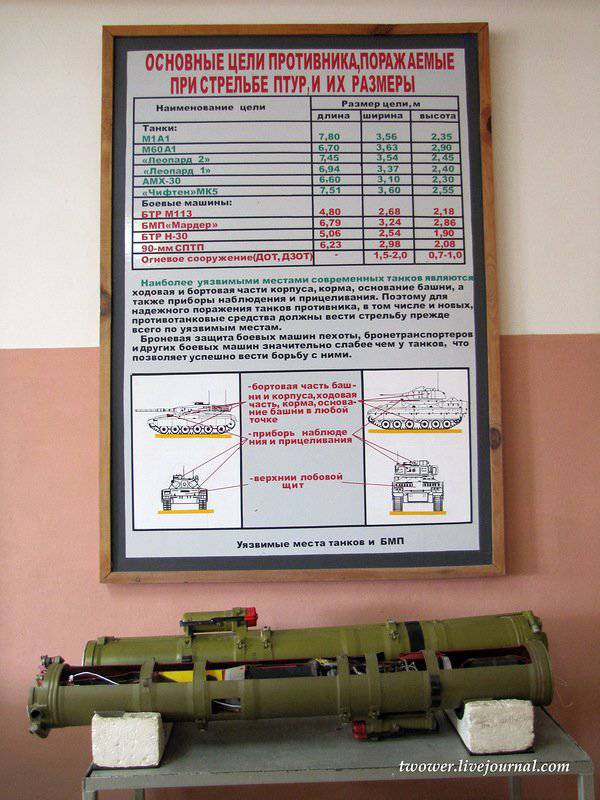
74.
Rifle class
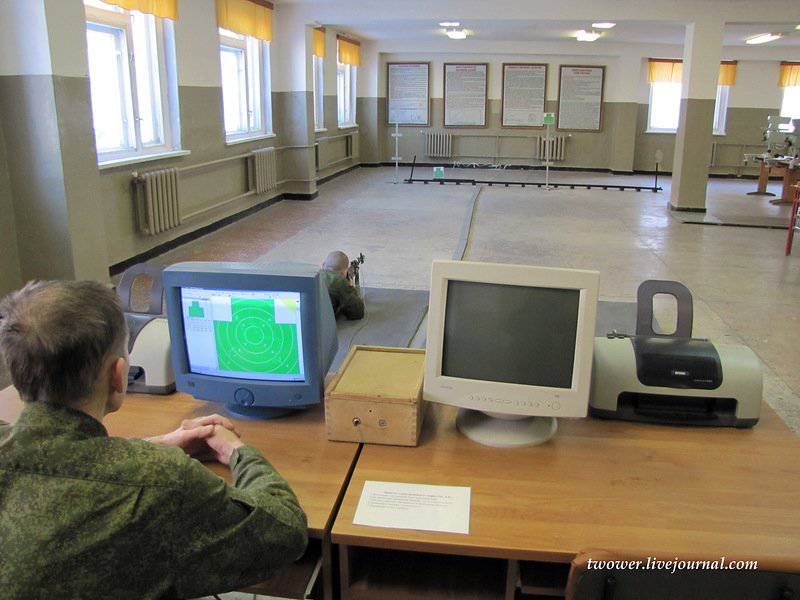
75.
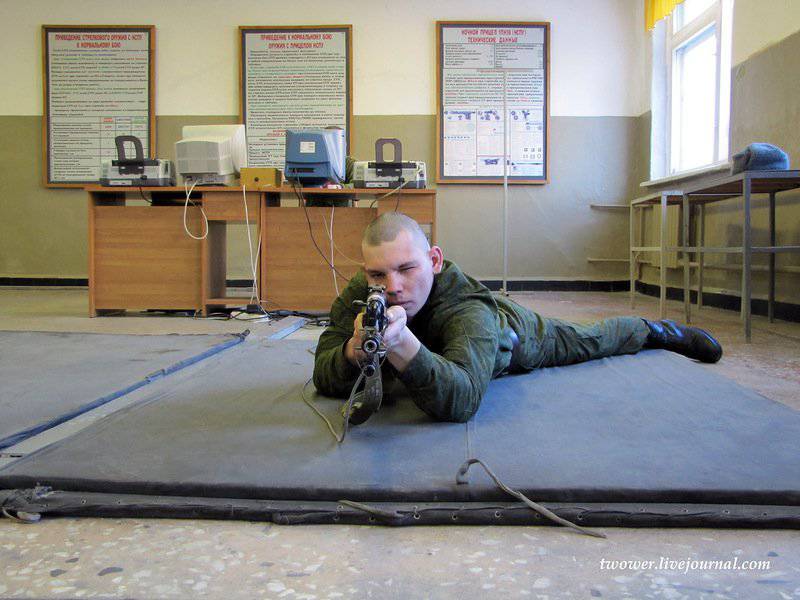
76.
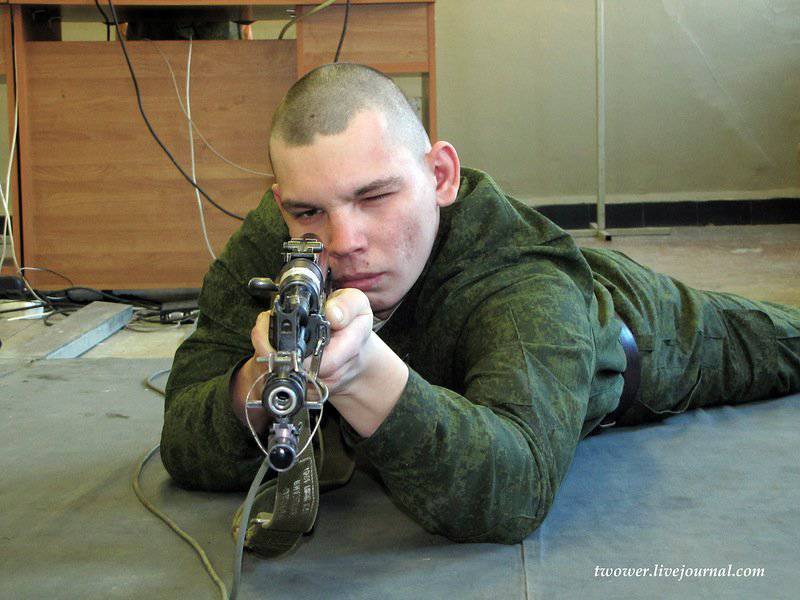
77.
One of the classes of practical study of the material part, where the BMP-3 is presented in full
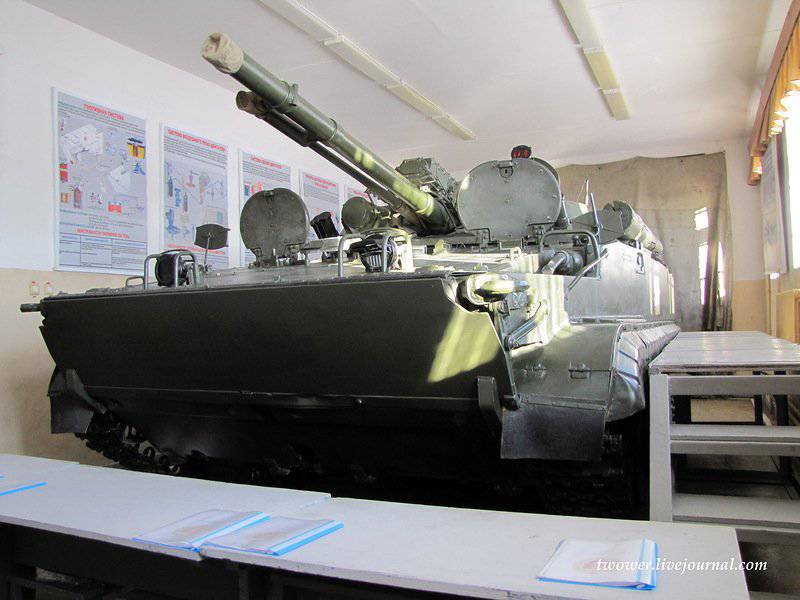
78.
Engineering Training for Branch Commanders
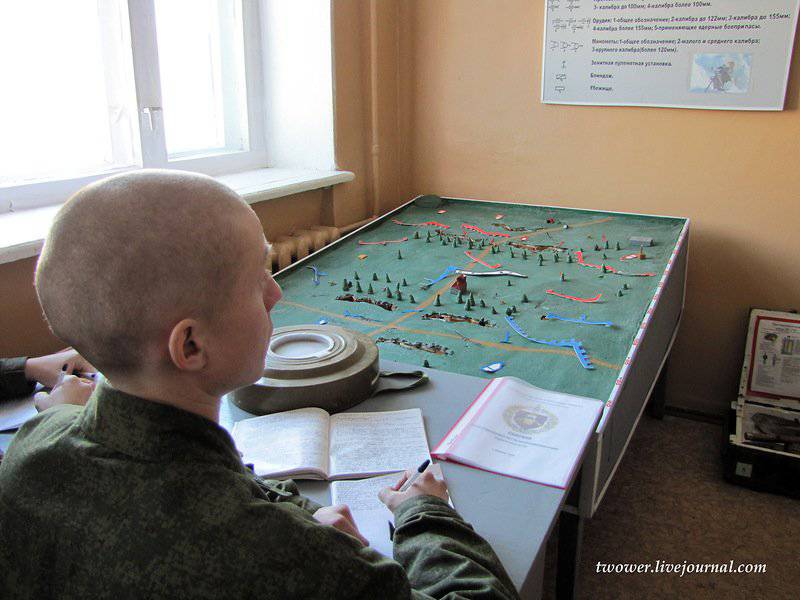
79.
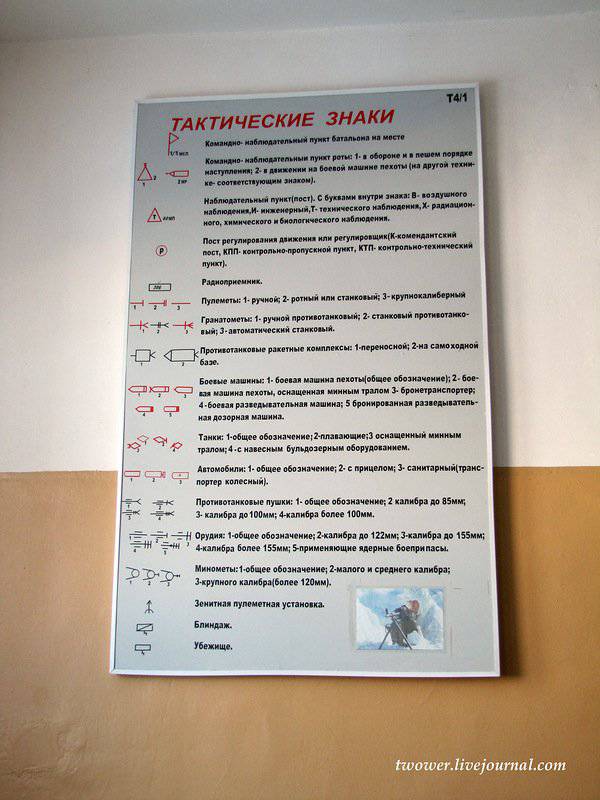
80.
From the end of January, cadets of the Ryazan Airborne School, enrolled in RVVDKU under the program of secondary special education for sergeants (more here). It’s too early to draw conclusions, but the Center’s command is very good about their training and knowledge. The first graduation of professional sergeants will take place this year.
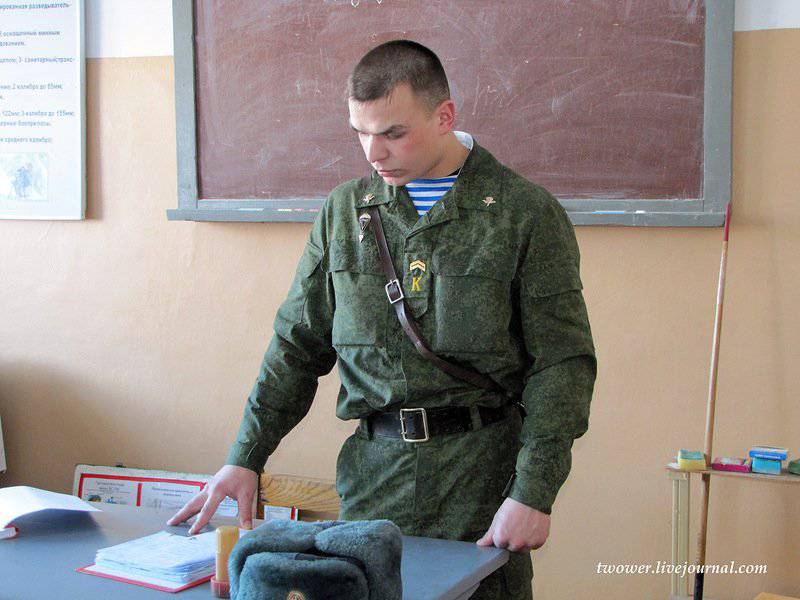
81.
Training classes at the site Sergeytsevo near Kovrov.
During the shooting, contract servicemen who came to the Center for retraining at the BMP-3 from the 20 Motorized Rifle Brigade were engaged in them.
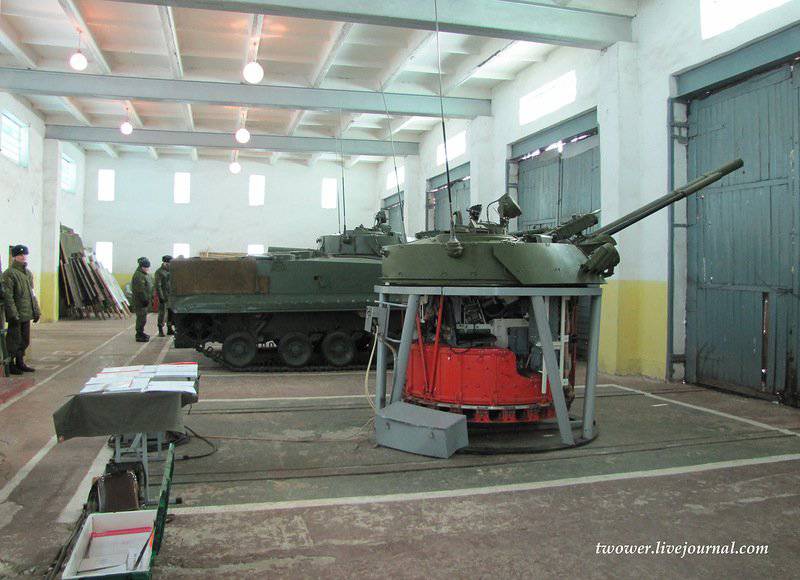
82.
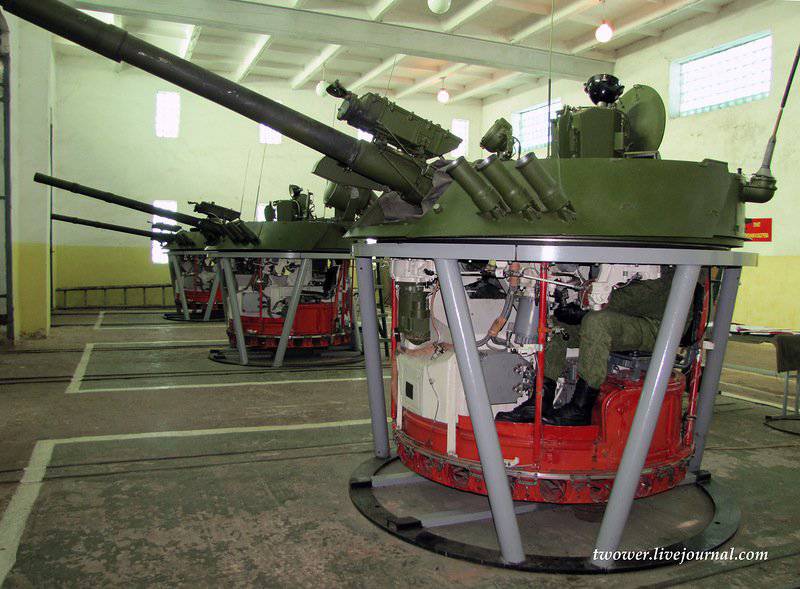
83.
Training gunners tank T-80. Shooting from a loose barrel
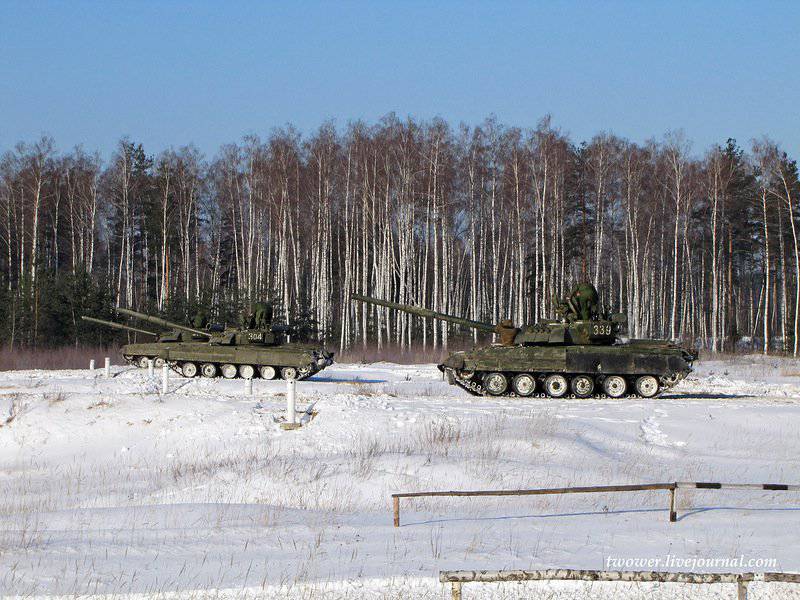
84.
In the center there are tanks of all three types, which are in service with the Armed Forces of the Russian Federation: T-72, T-80 and T-90
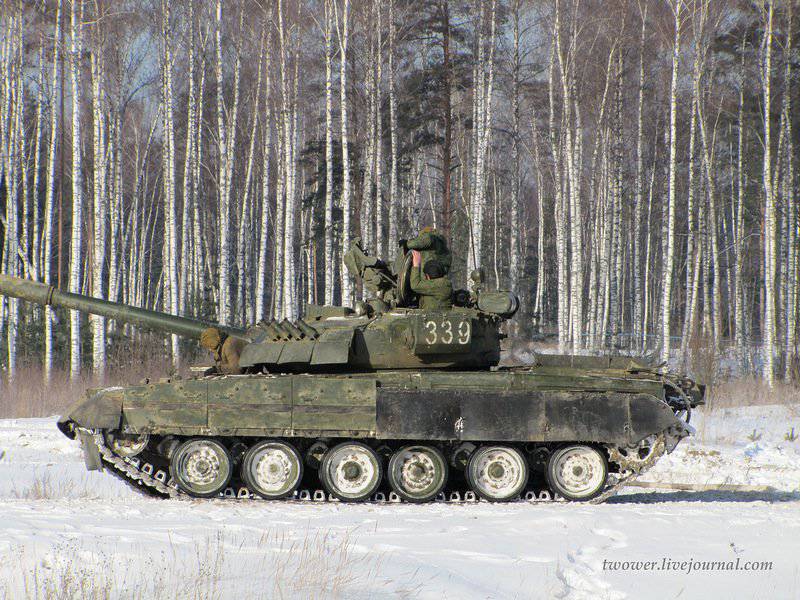
85.
Return after shooting the original
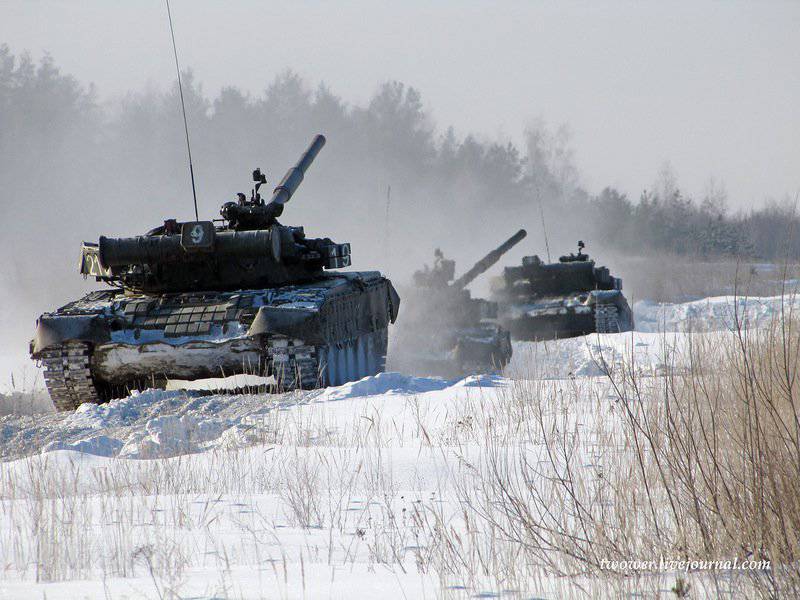
86.
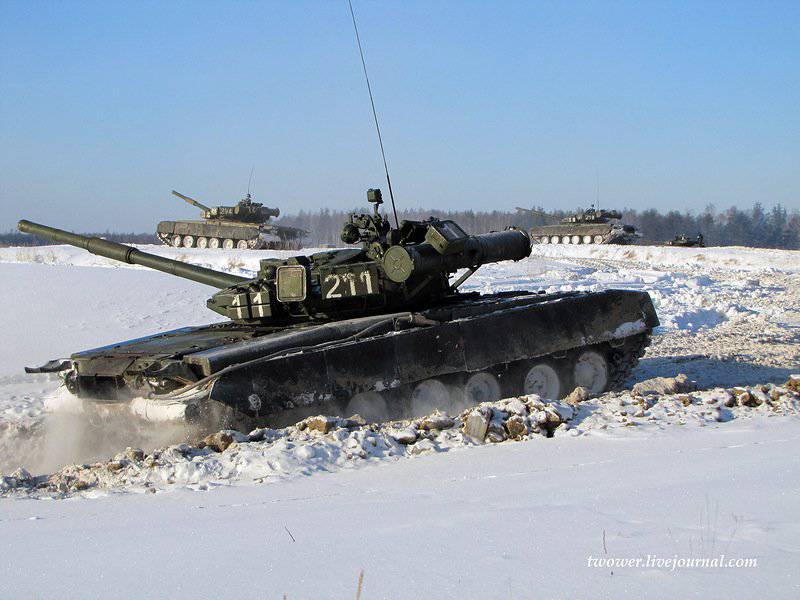
87.
Training tank commanders shooting anti-aircraft machine gun
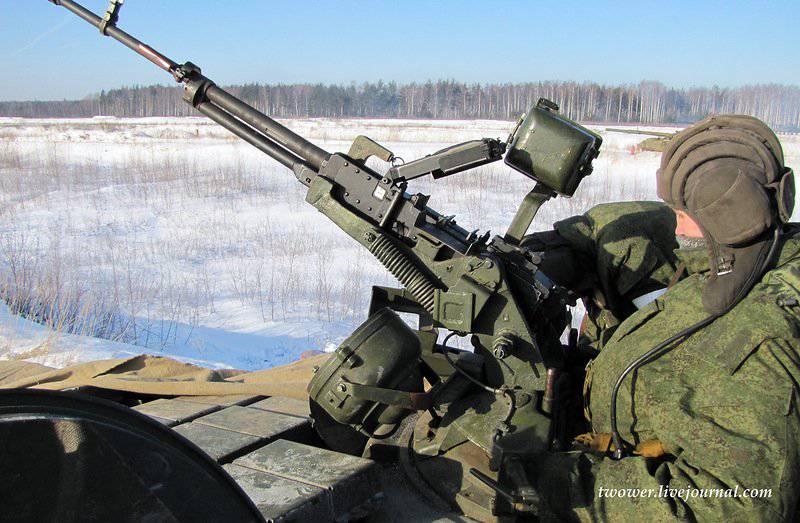
88.
The school of snipers operates in the center from December 8 2011 of the year. Duration of training - 3 month. One platoon of officers is cadets, platoon commanders and companies of the sniper companies of the ZVO and the Southern Military District brigades undergo training in it, the other two consist of contract soldiers enrolled in these companies.
The entire command and instructor staff was trained at the Sonechnogorsk school of snipers, and the CLC students who showed the best results go there.
The school is designed to obtain basic sniper skills: "idle" maturation, calculating the distance to the target in various weather conditions, proper care of the weapon, the basics of shooting. In this regard, cadets are forbidden to use weather stations, range finders and ballistic calculators. All parameters they must learn to calculate themselves.
Shooting training is conducted only by the example of the SVD.
The lesson plan is drawn up by the school commander on the basis of various teaching aids and a course of shooting. It is expected that the guiding documents on the new sniper training course will come soon.
The school does not teach actions in the composition of the sniper pair, but the help of cadets to each other is welcome.
The maximum range of shooting, which is taught in school - 600 meters.
In March, final exams will be held.
- surrender of physical training (exercises for strength, speed and endurance);
- delivery of tactical training (drawing up an azimuth card, walking in azimuth, reaching certain points)
- surrender of fire training (performance of exercises according to the course of shooting: bringing a weapon to a normal battle, an exercise in shooting on 300 m for glasses and shooting at moving targets at a distance of 450-500 m).
Upon graduation, documents are issued that:
- The soldier was trained in the school of snipers and is recommended for the position of sniper;
- the serviceman attended the training course, but needs retraining;
- the serviceman attended the training course, but is not recommended for serving in the position of sniper.
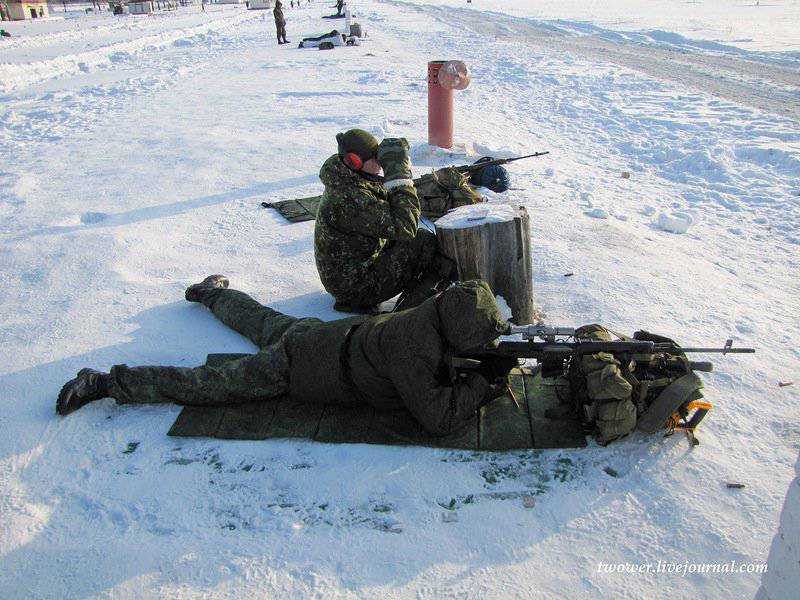
89.
Funny inscriptions on a self-made emphasis
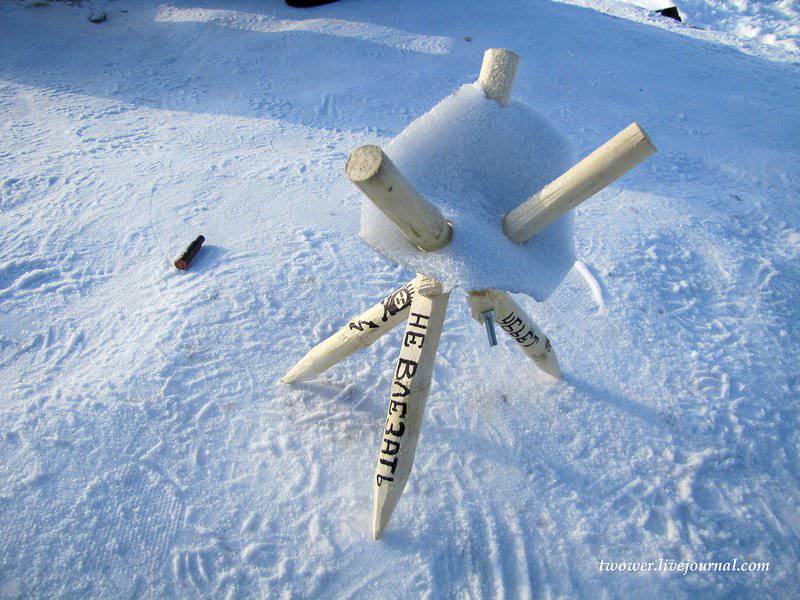
90.
Finally, traditional videos with cadets center. Filmed in an automotive training company
Information